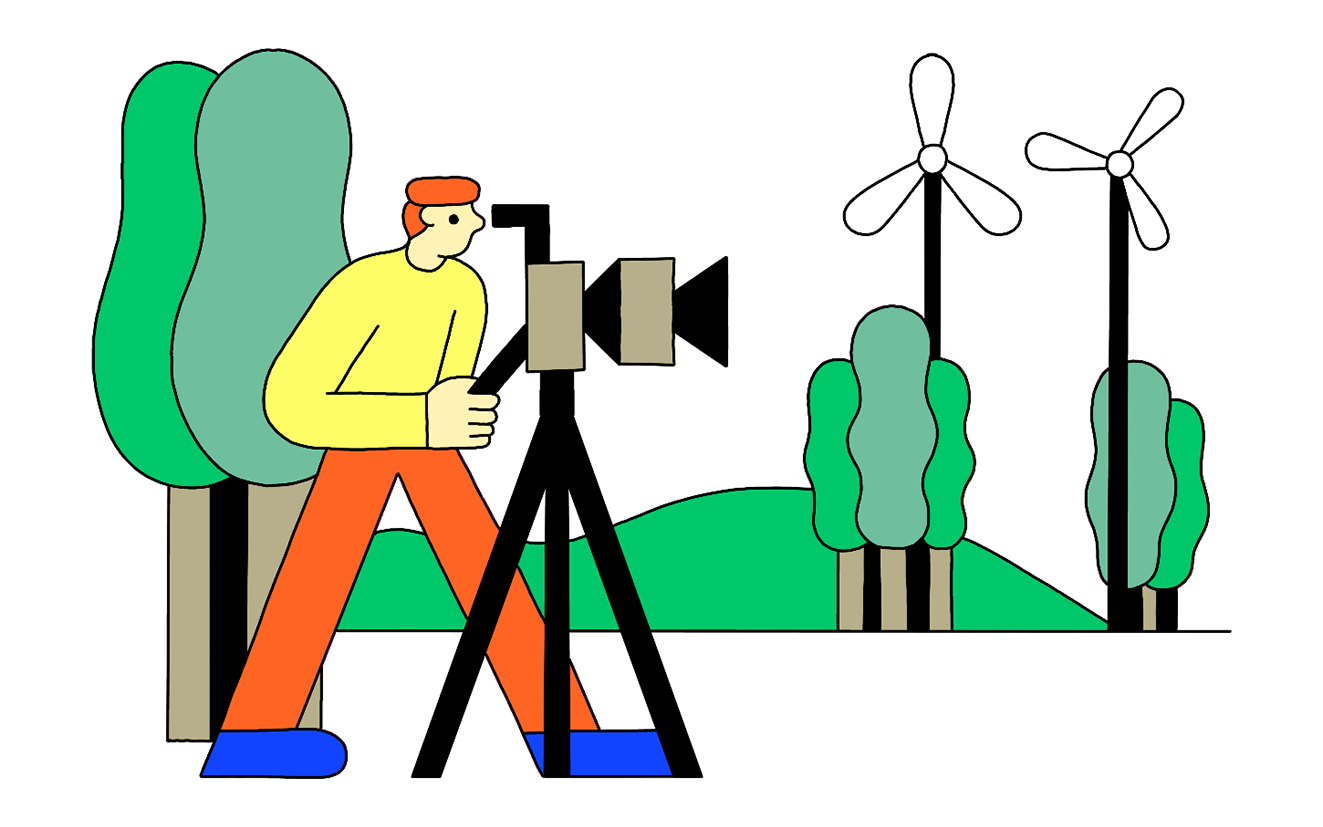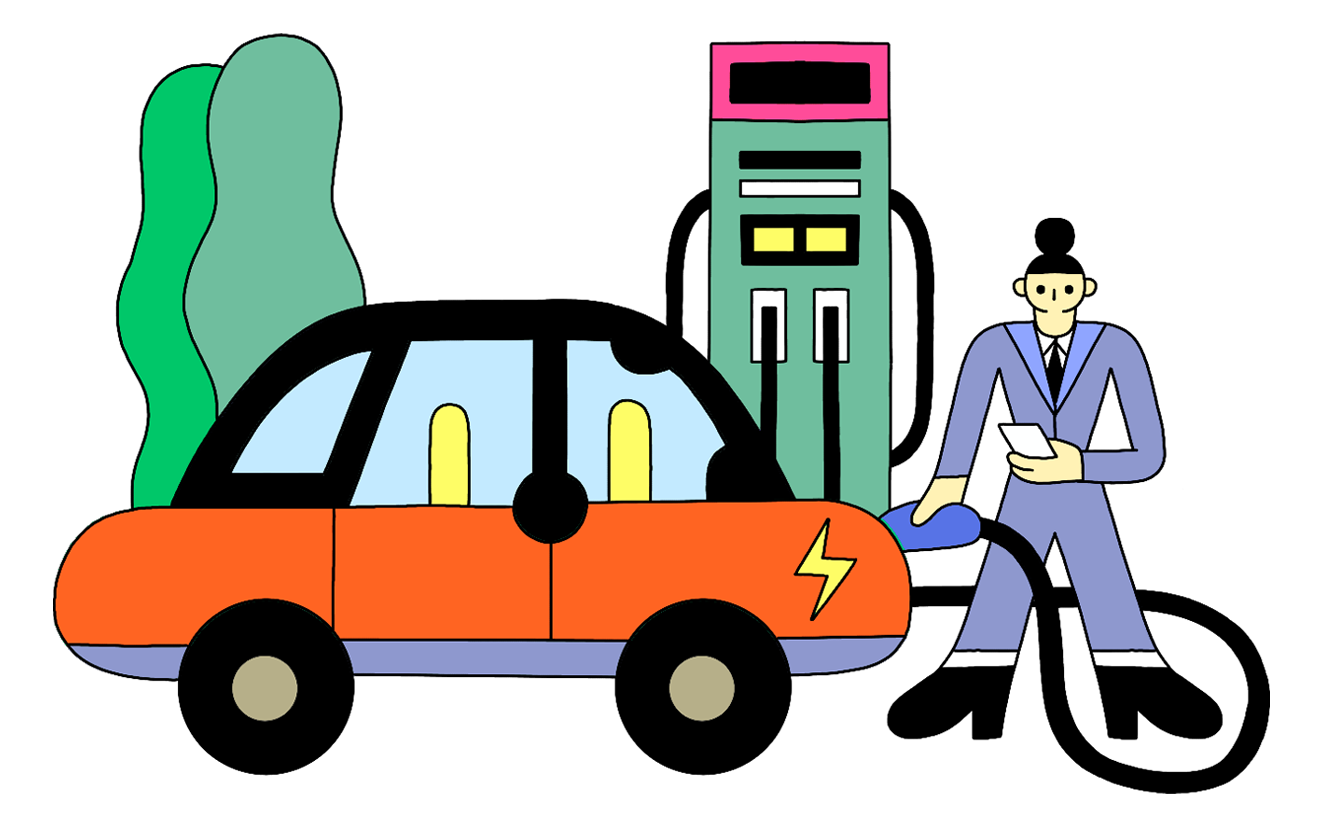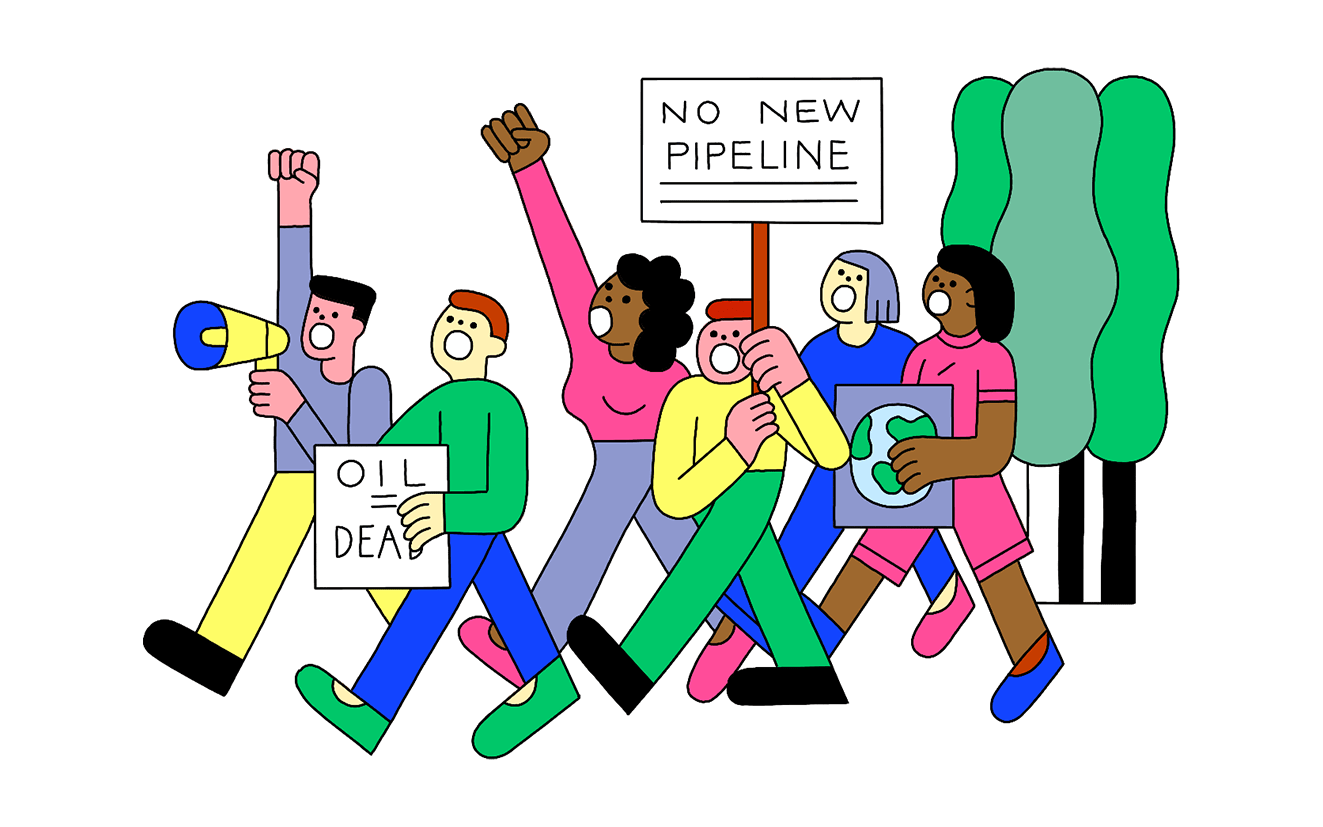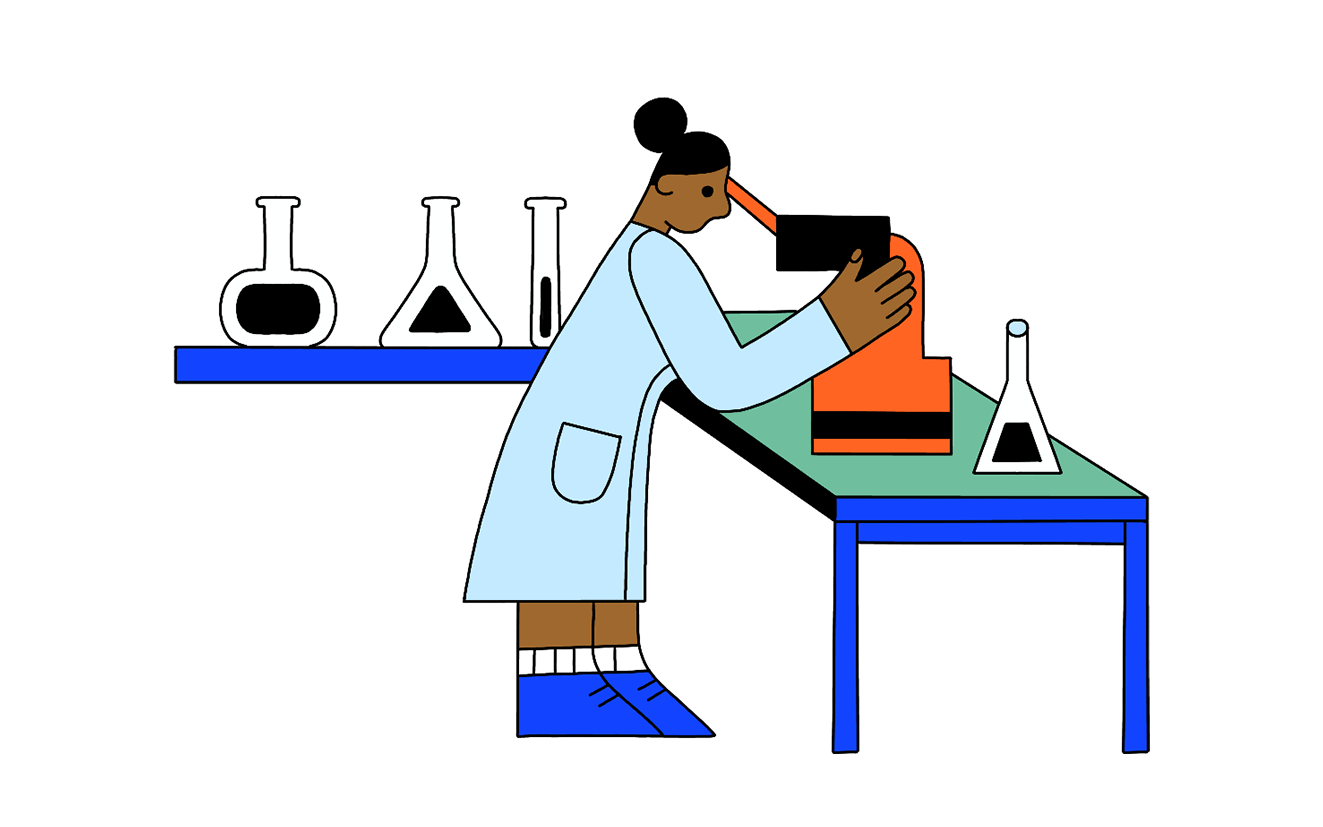
Grist 50 2024
Introducing the 2024 Grist 50 list
It’s easy to get mired in headlines that point to ever-increasing climate risks — in 2024, that could be a wildfire covering an area the size of Los Angeles, an early and already damaging hurricane season, or the hottest July on record, coinciding with a scorching summer Olympics. But that story is incomplete without the stories of those fighting back, bringing change to their communities, and inventing a better future. The Grist 50 is just a small slice of that counternarrative: 50 people across the U.S. who are tackling some of the most pressing problems of today in innovative and exciting ways.
On this year’s list, you’ll find creatives bringing powerful stories to new audiences, advocates pushing for healthy and just food systems, and tech wizards putting AI to work for more efficient energy infrastructure. These leaders have pushed back against harmful industries (and won), cut carbon emissions from hospitals, advanced wildfire solutions from Hawai‘i to California, and brought together unlikely coalitions to break ground on clean energy networks. They’re teachers, scientists, doctors, farmers, artists, entrepreneurs, and activists who are putting climate front and center in their work and driving real progress.
While no individual can solve climate change, progress depends on individuals figuring out how to bring their skills and passions to the table. The Grist 50 shows what that looks like. For each of the people featured here, their journey is still unfolding — these short profiles offer just a taste of what they’ve accomplished so far, and where they’re going.
Read the stories of climate leaders to watch in: Arts + Media, Business + Tech, Food + Land, Policy + Advocacy, and Science + Energy.
Eliza Evans

In 2019, Eliza Evans got a letter from a fracking company wanting to lease 3 acres of land in Oklahoma — land she didn’t even know she’d inherited from a great-aunt. Evans, a Brooklyn-based environmental artist, thought she could just say no, but drillers can steamroll in without mineral leases in most states because of so-called “forced pooling” laws. So she found a creative way to fight back.
Since companies have to attempt a good-faith negotiation with mineral-rights owners before drilling, Evans sought to give away fractions of her property to as many people as possible, making each of them owners of a tiny piece of land. She then made it into an art project, exhibiting the signed deeds in museums in New York and Pittsburgh. Evans’ previous work has focused on creating interactive installations about climate risks, for example, a greenhouse “time machine” that warns viewers about the future of extreme heat. But this one is different. Evans says it’s “the largest land-art project ever,” since mineral rights extend 4,000 miles to the center of the Earth.
Four years later, 8,000 people have agreed to put their names on a deed for the project. “I could not have been more delighted and surprised,” Evans said. “And I’m like, ‘Oh, this is a thing. This is a potential movement.’”
Now, she’s working to build that movement. Evans plans to unite mineral-rights owners who “give a damn about the future of the planet,” helping them either stop drilling projects or negotiate better leases.
“Mineral owners have zero experience of being an interest group,” Evans said. “So I’m looking for a new culture, a new awareness, as this is an interest group that could exercise a lot of cultural power.”
Hikaru Wakeel Hayakawa
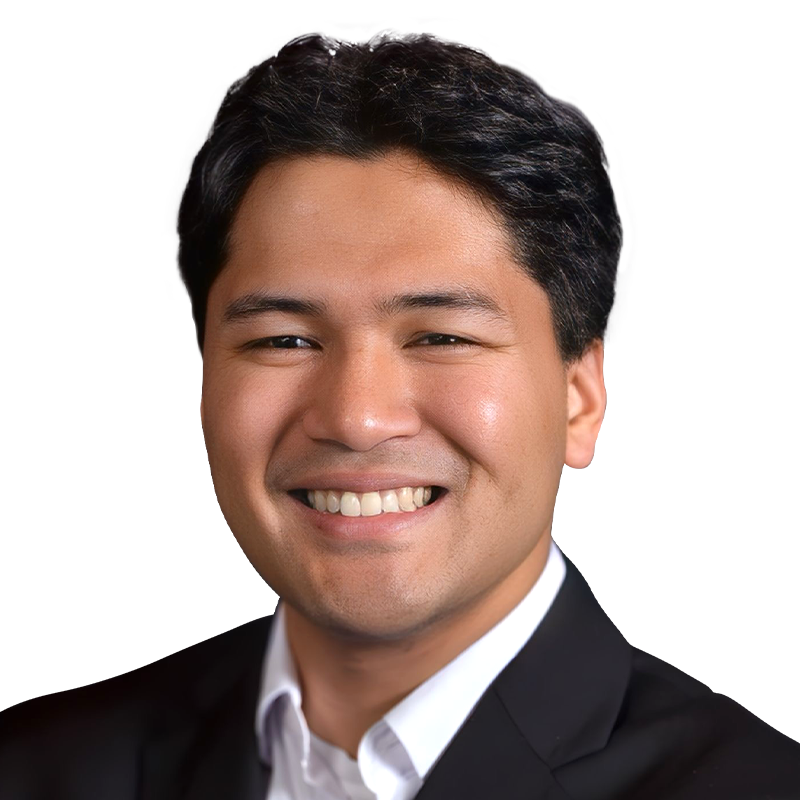
When Hikaru Wakeel Hayakawa was growing up, a son of multi-ethnic immigrants in a multilingual household in New Jersey, he felt most at home reading and writing sci-fi and fantasy. “I really appreciated the opportunities to imagine a world in which there were no limitations on whom I could be,” he said.
While his passion for equity and justice grew, he didn’t see a place for himself in the climate movement — until Hurricane Sandy hit his hometown in 2012. “I began to realize how environmental issues disproportionately affect marginalized communities, and how environmental issues were truly everyone’s issues,” he said.
Eight years later, on his 19th birthday, he joined a small team as a founding member of Climate Cardinals, which has since become the world’s largest youth-led climate advocacy organization. Its mission: Make climate education more accessible to non-English speakers. Although only 20 percent of the world’s population speaks English, around 75 percent of scientific information is available only in that language. When it comes to climate and natural sciences, that discrepancy is even more extreme, Hayakawa noted.
After helping run the organization as a volunteer throughout college, he became its executive director just last month. In the past four years, he has overseen a growing network of 16,000 volunteers in 82 countries and led a partnership with Google to boost the organization’s translation capabilities through AI. To date, the group has translated about 2 million words of climate information into more than 100 languages — everything from children’s books to emergency preparedness guides to infographics. It has also raised awareness about the urgent need to prioritize language accessibility.
“This is a systemic barrier that needs to be addressed in as many ways as possible,” Hayakawa said.
Suzie Hicks

Suzie Hicks never thought a college internship at the New England Aquarium would “absolutely radicalize” them. But in the summer of 2017, the entertainment major found themself monologuing to kids by the touch tank, teaching them about anemones and ocean conservation. There, Hicks discovered their calling as a climate educator.
“I want to use the tool of children’s media to create the change I wish to see in the world,” Hicks said. Following encouragement from a boss at the aquarium, they made their first educational program — a two-episode YouTube science show. Hicks earned a master’s from Columbia University’s climate school as they continued making educational content for television and social media, earning a following for their comedic, relatable voice.
This summer, Hicks and their puppet co-host Sprout starred in a new pilot of their show Suzie Hicks the Climate Chick, a climate education program aimed at kids aged 4 to 7. A proof of concept for the show won a Visionary Film Award at the Portland EcoFilm Festival, and now Hicks has crowdfunding and a production company behind it. The first episode features renewable energy professionals, a visit to a solar panel warehouse, a dance party, and a cast of kids called “climate buddies.”
Those kids come from another part of the Suzie Hicks universe, a course called “Climate Champions” that they teach in Los Angeles. Hicks aims to be the “welcoming committee for hard topics” through the show, teaching, and other projects they have in the works, like books and a podcast. “You don’t have to reinvent the wheel,” they said of their approach to teaching kids about climate solutions. “The wheel has already been built, but we need help pushing it up.”
Elise Joshi

When she graduated high school in 2020, Elise Joshi had no plans to work in politics or climate advocacy. She enrolled at the University of California, Berkeley with the intent to study neurobiology. The pandemic would change that.
“Everyone slowed down, and I started reading more than I had ever read in my life,” Joshi said, “largely on climate and social justice and how the two are correlated with each other.”
Joshi recorded all she learned in color-coded documents with legends. Her desire to do more led her to switch majors to environmental economics and policy, as she took to TikTok to talk about climate change and its many intersections — offering up the documents she created as a way for her viewers to dig deeper than what she could cover in a single video.
As her love of digital organizing grew, so did her reach, and eventually she became executive director of Gen-Z for Change, a collective to empower young, social media-focused activists on progressive issues, including climate. In 2023, Joshi was at the forefront of the #StopWillow campaign on TikTok, in which thousands of people created content to educate others about the Alaska oil drilling project and urge President Joe Biden to halt it. The campaign grew to be one of the largest environmental actions in history, with 1.1 million letters sent to the White House.
Though the administration ultimately approved the project, Joshi and Gen-Z for Change have doubled down on their digital strategy — for instance, participating in an online campaign that successfully pressured Biden to pause approval for new liquefied natural gas export terminals. “There’s a purpose that digital organizing has in all of our efforts, to help on-the-ground organizers,” Joshi said. “We have to have a diversity of tactics.”
Sage Lenier

By the time Sage Lenier was a freshman at the University of California, Berkeley, she was already fed up with the way climate change was taught — “Underwhelmed,” as she put it. So, the following fall, at just 19, she took advantage of a program that let students teach their own classes and launched a course called “Solutions for a Sustainable and Just Future,” focused on realistic, systemic changes that can be made to solve the climate crisis.
“It’s a crash course in circular economy, food systems, infrastructure,” Lenier said. She wanted to offer a more holistic understanding of solutions and an antidote to paralysis.
The class broke the enrollment record for a student-led course, with over 300 students signed up in a single semester. It’s still being offered on campus by student teachers she trained. In 2021, not long after graduating, Lenier also held a digital version of the course to broaden its reach.
In 2023, she turned her experiences into a nonprofit called Sustainable and Just Future, dedicated to improving climate curricula across the country. Even as she grapples with the new challenge of running an organization (“None of us have the funding we need,” she said, reflecting on the generation of activists making this same transition), Lenier is working to expand her original curriculum and get it into more classrooms. She’s currently in talks with several universities.
Her nonprofit is also launching a fellowship this fall to help students make a case at their schools for a new climate curriculum, which Lenier and her team can help develop.
Duncan Meisel
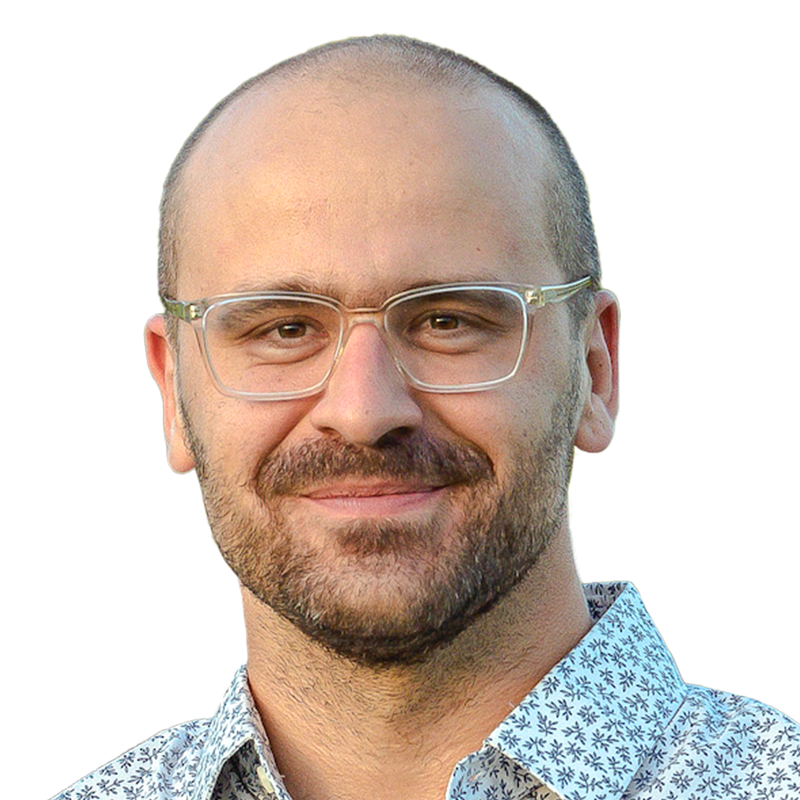
Where did climate denial come from? It started with the public relations wizards working for oil companies, who invented the playbook on how to sanitize the reputation of polluters.
“Basically every misleading thing that anyone believes about climate change begins with an ad agency working with a fossil fuel client,” said Duncan Meisel, the executive director of Clean Creatives, an initiative pressuring PR firms and ad agencies to stop working with the companies responsible for climate disaster.
Meisel was inspired to start the project after watching advertisements for the American Petroleum Institute, the oil industry’s biggest lobbying group, during the 2020 election season. The agency behind the ads was based in Austin, Texas, where he lives. Meisel figured promoting fossil fuels likely didn’t match the values of many creative people at the PR companies doing this work. Calling out those dirty ties could cause a reckoning, he thought: “This is an industry that knows the literal dollar value of reputation better than anyone else on Earth.”
So far, more than 1,100 agencies in 64 countries have signed Clean Creatives’ pledge, refusing to work for fossil fuel companies. Purportedly because of the increased scrutiny, Edelman, the world’s biggest PR company, pulled out of a relationship with a bank funding the East Africa Crude Oil Pipeline. The pressure also led Edelman to pause its work with Exxon Mobil for several months in 2022, while the Inflation Reduction Act was being debated, and Meisel suspects that made it easier for Congress to pass the landmark climate law.
“In a world where the biggest polluters don’t have access to these genius communicators, they can’t mislead the public into opposing climate action,” Meisel said.
Alisa Petrosova
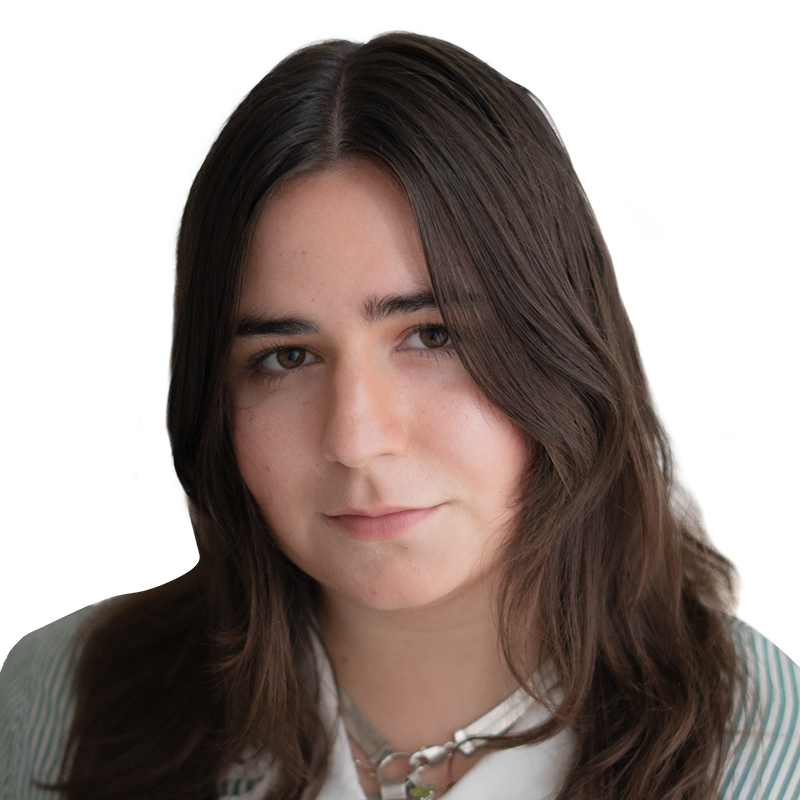
While studying at Cooper Union, a college in New York focused on arts, architecture, and engineering, Alisa Petrosova had her first experience helping bring climate stories to a global audience. She was hired to work in the writers room for the 2023 Apple TV+ show Extrapolations, as a researcher and world builder.
In her role, she helped build out a timeline from 2030 to 2100 depicting the future of infrastructure, government, sex, and pinot noir, among other things. “It really taught me what it meant to translate science and data into story,” she said.
Petrosova already had experience championing climate narratives, as co-founder of a student organization that successfully pushed the Cooper Union board of trustees to integrate climate change into the curriculum. But now she saw an opportunity for wider impact. “I decided that to actually be a player in this space,” she said, “I would need to understand more of the climate science and policy to be a better translator.”
Petrosova pursued a master’s degree in climate and society from Columbia University, and just before graduation, she became a storytelling fellow with Good Energy, a nonprofit focused on bringing climate stories into Hollywood. Within a few months, Petrosova became the organization’s first associate director of climate research and consulting programs, helping creators understand how to accurately depict climate change in their stories. That included collaborations with The Last City (a narrative podcast set in 2072) and the not-for-profit story incubator Cinereach.
Petrosova left Good Energy last month to focus on telling her own climate-forward stories. She’s currently developing a coming-of-age feature film that uses magical realism and animation interludes to illustrate two immigrant families reckoning with their pasts in an attempt to share a vision of the future.
Ariel Rodríguez

Ariel Rodríguez’s passion for meteorology traces back to watching his uncle forecast the weather on TV during his childhood in Cuba. He loved playing with the hand-drawn maps his uncle used on air. “I grew up saying I wanted to be a meteorologist,” he said. Today, Rodríguez is the prime-time weather forecaster at Noticiero Telemundo 51, a Spanish-language broadcaster based in Miami and the most-watched station in South Florida.
On top of daily weather news, for the last 11 years, Rodríguez has made it his mission to inform his community about climate and environmental issues. He began reporting on regional environmental stories through a weekly series called Alerta Verde (Green Alert), and in 2017, he retooled the show to focus on climate change, renaming it Alerta Verde: Cambio Climático (Green Alert: Climate Change).
Last year, with funding from the Solutions Journalism Network, Rodríguez created a short documentary series called Planet in Crisis: Solutions. Each of the five initial episodes focused on a different facet of microplastics pollution, and the series was released through NBC Universal channels in both English and Spanish. It became the most-viewed program in the South Florida TV market, and led to the creation of a climate change and environmental unit at the Telemundo 51 and NBC 6 duopoly stations.
This year, Rodríguez is working on a new series under the Planet in Crisis umbrella, focused on pollution from human waste in Biscayne Bay. “There’s always a story to tell,” he said. In reporting the weather and climate issues alike, Rodríguez sees an opportunity to bring essential stories to the large number of Spanish-speaking migrants who watch his station. “I always try to, in my narratives, speak to those people — because I’m one of them,” he said.
Birdie Sam
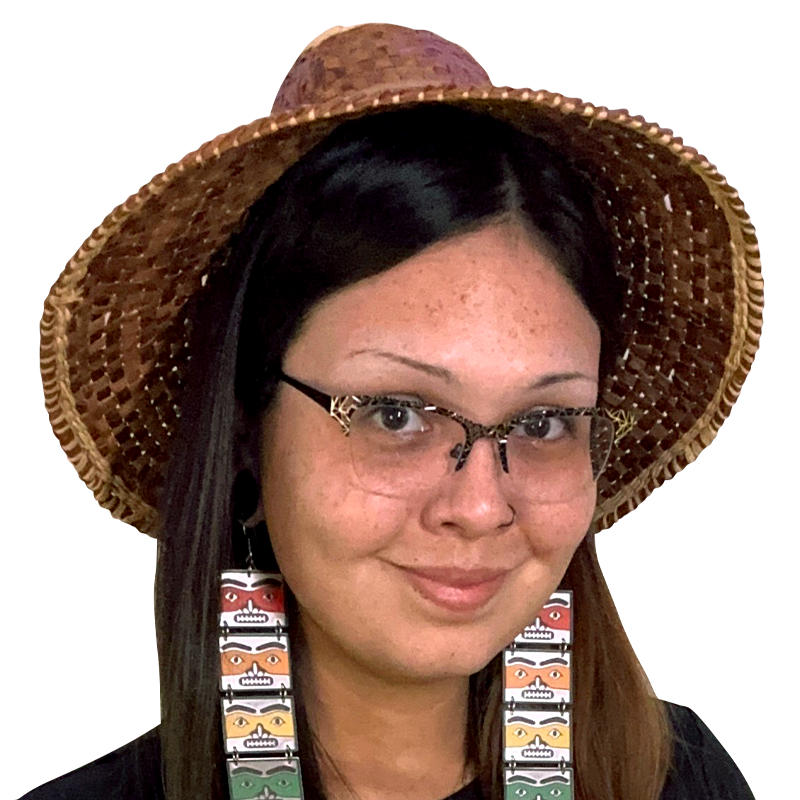
Birdie Sam began creating digital content after the pandemic cost their husband his job. To keep their family afloat, Sam leveraged their video editing and public speaking skills to spin up a social media presence around making and selling cloth masks. In 2021, when Enbridge’s Line 3 oil pipeline was nearing completion, a campaign to obstruct it swept social media and became Sam’s first step into the world of digital advocacy.
Sam went on to support other climate-focused campaigns across social media, including those pushing against the Willow project, Enbridge’s Line 5 pipeline, and the creation of new export terminals for liquefied natural gas. Along the way, they collaborated with other digital climate advocates and even partnered with Patagonia, all while centering a message opposed to climate doom.
“Doom really only benefits the oil companies at the end of the day,” Sam said. “We have to really root our work from radical hope.”
Their personal brand of advocacy includes sharing and discussing climate headlines, calling out fossil fuel executives by name, and rallying their followers with the hashtag #teamorca, an approach that has helped them grow their audience to over 340,000 on TikTok.
Sam also advocates for Indigenous justice, with a particular focus on the The Central Council of the Tlingit and Haida Indian Tribes of Alaska, of which they are a member. They’ve talked about how anti-Indigenous residential schools impacted their family, and they are working with their dad on the Lost Alaskans Project, which aims to identify, and return to their families, the remains of Alaskans who were interned in a psychiatric asylum in Portland, Oregon, in the early 1900s.
Sara Zewde
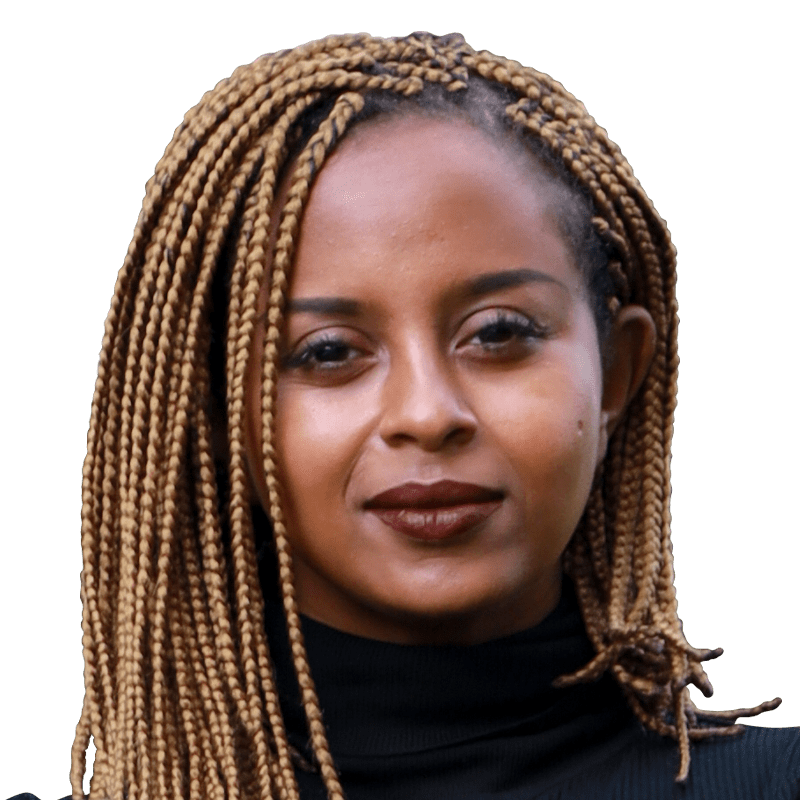
When Sara Zewde decided to become a landscape architect, her vision went well beyond picturesque parks and manicured gardens. “I entered into the discipline largely feeling like it wasn’t operating at its full capacity — that it has been relegated to beautifying spaces between buildings,” Zewde said. “I was always moved to landscape architecture more with the feeling that it is foundational to how we can live on the planet.”
She started down this path after watching, from afar, as Hurricane Katrina tore through the region that raised her. She understood the catastrophe, and others like it, as a confluence of climate, ecology, politics, race, and infrastructure. And she believed that landscape architecture could offer a unique type of intervention in those compounding issues.
Her approach involves honoring the story of a place while also preparing for its future. One of her firm’s recent projects is an 8-acre site on the grounds of Dia Beacon, an art museum in New York. After consulting with Indigenous representatives about the site’s history as a crossing point on the Hudson River, she and her team designed a series of “sculptural landforms” that represent movement from east to west. These features also offer flood protection, while walking paths and native meadow plants will create a space for the public to enjoy.
Her firm, Studio Zewde, recently celebrated its sixth anniversary. The 15-person team has expertise in a range of topics, from soil science to architectural design to art history. That diversity shapes the firm’s multifaceted approach, Zewde said. “It also just inspires and energizes me about what’s possible, and thinking of new ways to make landscapes that are sustainable and resilient as all of these climatic pressures come to a head.”
Naomi Davis
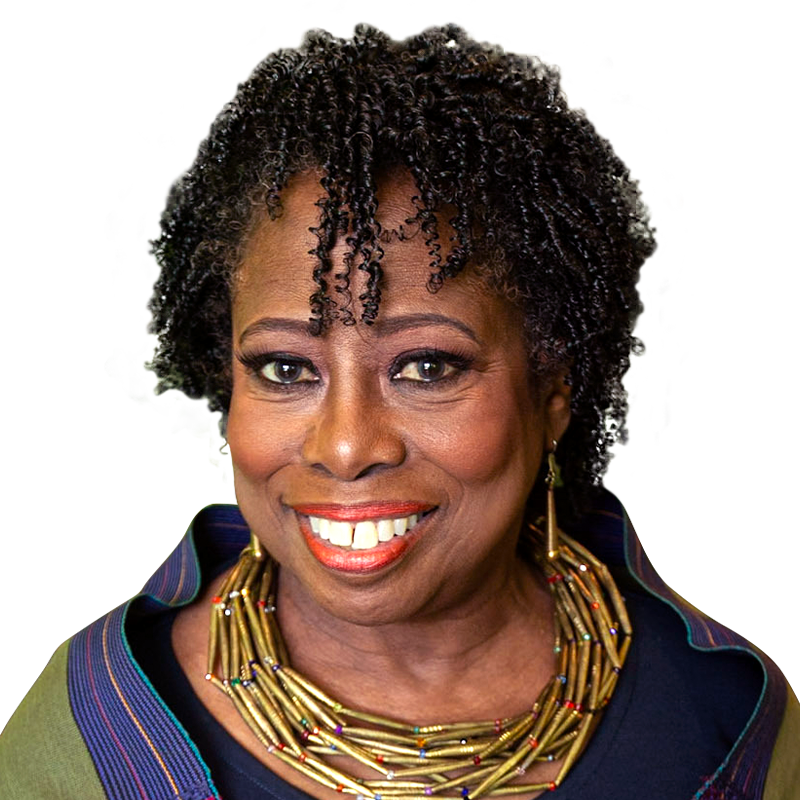
Naomi Davis grew up in the mixed-income Black neighborhood of St. Albans in Queens, New York. “It literally was that kind of neighborhood where everybody knew your name,” she said. “It was the church around the corner, the school down the way.” She recalls it as a thriving community, built by the children of the Great Migration.
Fifty years later, after watching Black neighborhoods disintegrate due to chronic disinvestment and racist policies, Davis felt called to reignite the development of neighborhoods like the one she grew up in.
Having moved to Chicago as an adult, she began researching community economic development in 2000. “It was at that time that I discovered sustainability,” she said, and she created The 8 Principles of Green Village Building, which includes things like local energy production, affordable green homes, and localized economies. “Only a whole-system solution can transform the whole-system problem common to Black communities everywhere,” she said.
In 2007, Davis founded the nonprofit Blacks in Green to begin implementing these ideas in Chicago, bundled together into a model called the Sustainable Square Mile. The organization is currently working to implement this vision in the West Woodlawn neighborhood, where Davis lives. So far it has acquired a handful of properties, including vacant lots it has converted into gardens and a church it plans to turn into a hub for clean energy and neighborhood resilience. The org also plans to create courses and incubators that could help more local Black-owned businesses get off the ground.
“It’s a long game,” Davis said. “We’re looking at a vision of Black communities being synonymous with beauty and prosperity and comfort and joy.” As a system designed to be replicated — with a mentorship cohort launching this fall — that’s exactly what the Sustainable Square Mile aims to accomplish, she said. “That’s the new narrative.”
Brendan Hermalyn
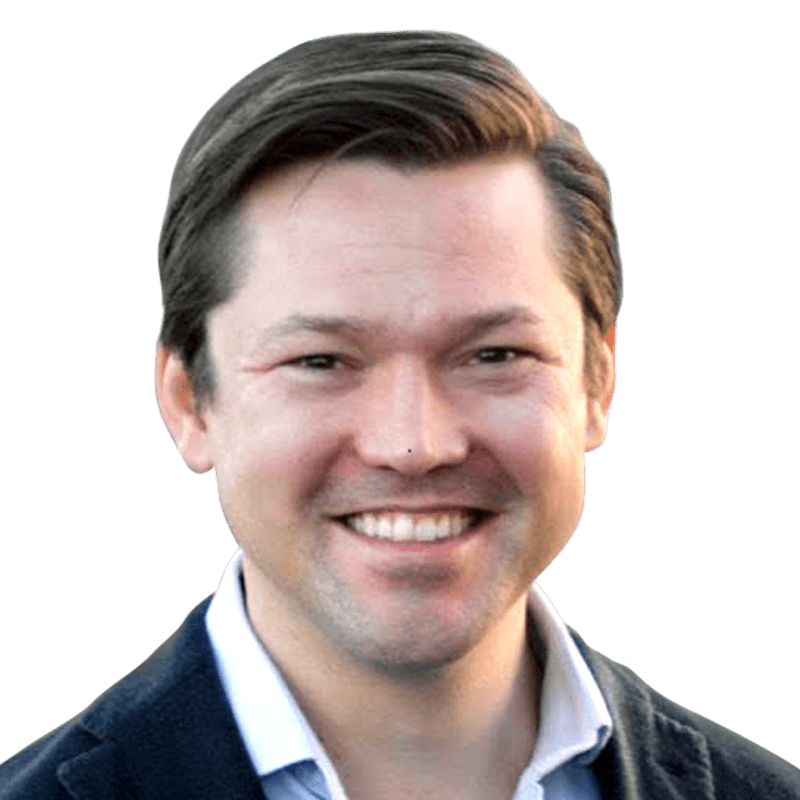
In New York City, 70 percent of greenhouse gas emissions are directly produced by heating and cooling buildings. But for building owners, it’s hard to pinpoint where emissions come from — the most they can really do is check their gas bills to see how much they’re consuming. Brendan Hermalyn, a New Yorker who grew up in the Bronx, thought a more precise system should be possible. “My car has a check engine light. Why doesn’t my building?” he said.
That’s where his company, Thalo Labs, comes in. With the startup, Hermalyn has used his expertise in building sophisticated hardware systems for the aerospace and defense industries — he used to build satellite cameras for NASA — to develop sensors that measure emissions.
This allows the company to answer basic questions about a building’s emissions sources and find solutions like plugging leaks, replacing boilers, and installing direct-air carbon capture systems. “Is it leaking when it’s on? Is it leaking when it turns off? Does it have a very high oxygen ratio and therefore is running lean? We’re able to prescribe exactly what is wrong with the systems and therefore be able to tune them,” Hermalyn said. The interventions reduce climate footprints while also cutting maintenance costs.
He calls it “picking up the carbon trash.”
Thalo works with Fortune 500 companies across the Eastern Seaboard, and even the Empire State Building. By the end of 2025, the company estimates it will be responsible for at least 81,000 metric tons of CO2 equivalent in emissions reductions. Hermalyn’s ambitions don’t stop there: “We’d like to 10x that number next year; we’d like to 100x that number in the next couple years.”
Robert Kabera
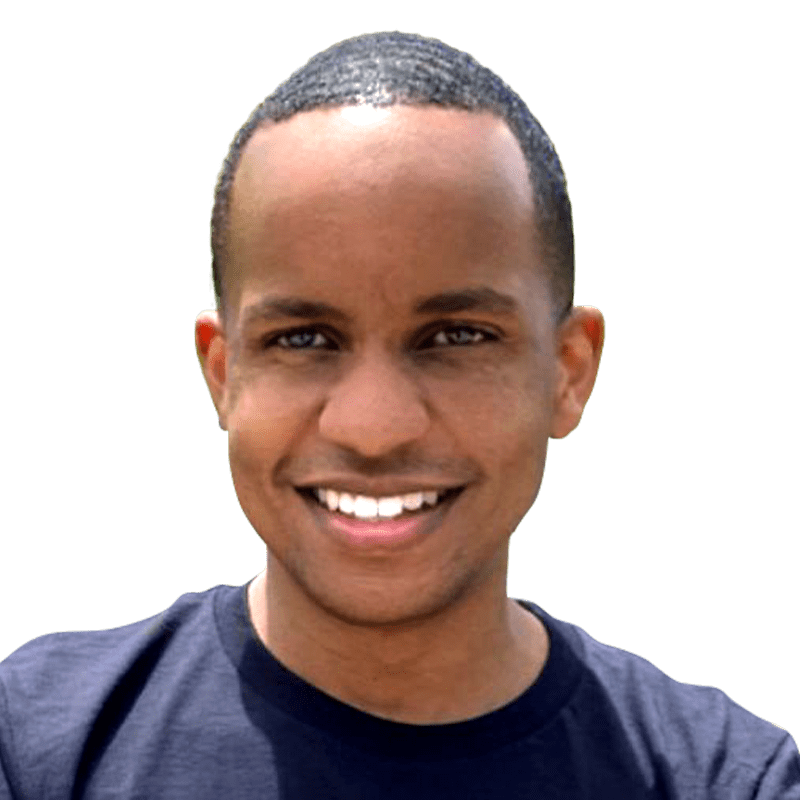
Robert Kabera was only 5 when his family survived the 1994 Rwandan genocide. What got his family and their neighbors through, he said, was hope. “And the way you generate hope is you stop living for yourself and you take care of the person next to you.”
Years later, in a refugee camp in Botswana, he was studying by the light of a kerosene lamp that went out every time the desert breeze blew. He looked up and saw an airplane flying overhead. “I asked myself two basic questions,” he recalled. “Number one, how can we get that same light that airplane has down here for everyone? And number two, once we get it down here, how can we make sure that it stays on?”
To answer the first query, he went on to study energy resources engineering at Stanford University. To answer the second, he founded Sheltera. The company uses satellite imagery, remote sensing, and AI to help utilities manage their biggest hazard: vegetation.
Kabera first set out in 2020 to develop a model that would predict power outages from climate-driven extreme weather events. He soon discovered that downed trees, falling limbs, and overgrown weeds present a much more persistent problem for utilities. Most rely on line workers driving around to assess infrastructure, creating emissions in the process. In less than a year, Kabera developed a system that allows utilities to remotely identify trouble spots and target maintenance, ultimately increasing energy reliability and improving grid resilience.
Kabera’s focus on risk management goes back to his childhood, and the immense uncertainty he had to adapt to when his family lost everything. “People see it as, I’m good with AI or the grid,” he said of his chosen career. “It’s not that. I’m very good with risk.”
Trish Kenlon
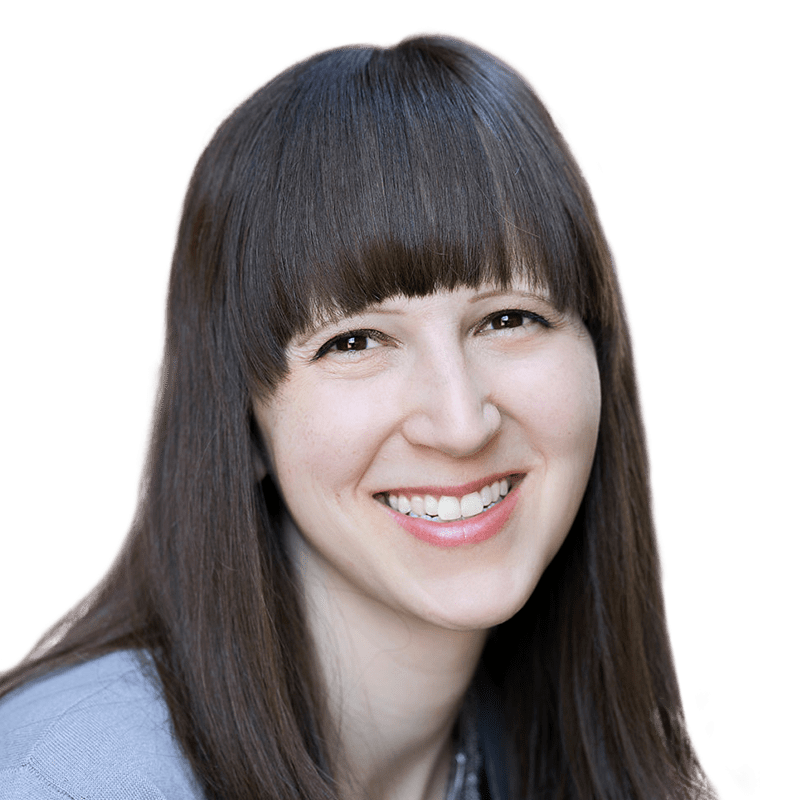
Suppose you don’t find your job fulfilling, and you feel that the urgency of the climate crisis demands action from you. Is it possible to earn a living helping the planet? Finding a new career is a daunting prospect at any professional stage — even more so in a field as young and constantly changing as “sustainability.” Some years ago, Trish Kenlon faced this dilemma, when she transitioned from a career in consulting to one in corporate sustainability.
Soon, others who were contemplating a similar switch started coming to Kenlon. These conversations gave her an insight: “The two biggest roadblocks that are keeping people from this kind of work are, number one, information asymmetry — people just don’t know what they don’t know in terms of the opportunities that are out there, or how to pursue them. And, number two, developing skills. Climate and sustainability work is incredibly varied, and each subsection has its own specific tools and frameworks and regulations that you really need to know in order to contribute successfully.”
So Kenlon turned her informal job talks into a business: Sustainable Career Pathways. Over six years, she’s shepherded thousands of clients — from undergraduates to mid-career professionals — into climate jobs, developed partnerships with universities and fellowship programs, and written prolifically on the state of hiring in the field.
“My mission is to get as many people into climate and sustainable work as quickly as possible,” said Kenlon — although ironically, if she’s successful, she’ll have to find new work herself once again. “Ultimately, I hope that the work that I’m doing right now will be putting myself out of a job, like everybody who works in sustainability,” she said.
Amy Larkin
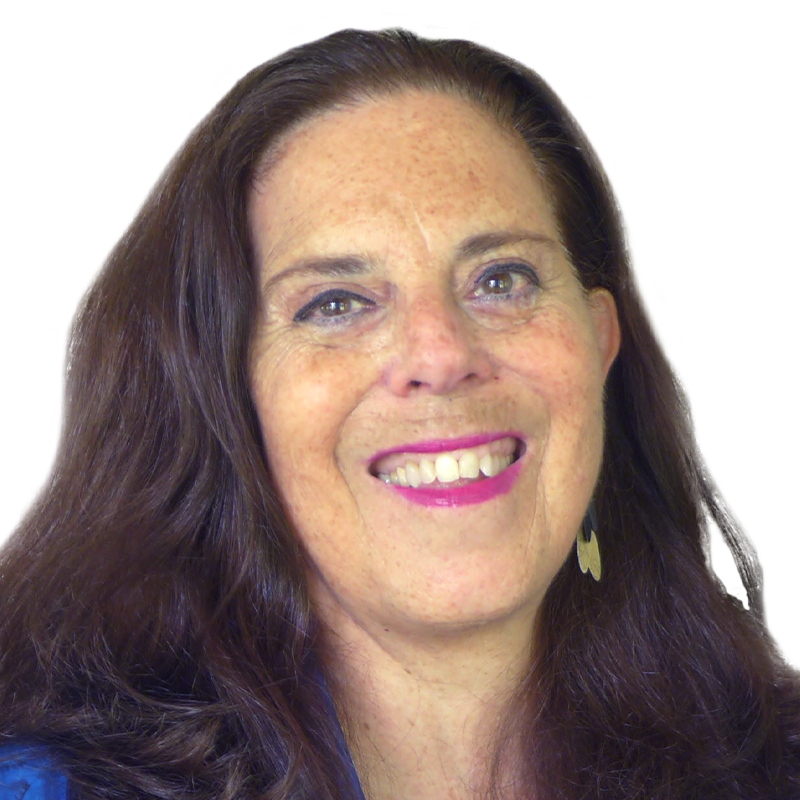
Amy Larkin isn’t just an environmentalist; she’s a self-described “radical collaborator.” In an effort to address the plastic pollution crisis, she’s spent the past several years convening an unlikely coalition of large corporations, environmental justice organizations, policymakers, labor groups, and others, with the goal of developing a set of unified standards on reusable packaging systems.
Larkin’s group, called PR3, aims to make it easier for companies to replace single-use plastic packaging with containers that can be reused again and again. Doing so could cut down on the 19 million metric tons of plastic waste that enters the environment every year and prevent exposure to toxic chemicals used in plastics.
Switching to reusables will require entirely new ways of transporting, tracking, washing, labeling, and restocking containers. That’s why companies need standards, Larkin said — they’ll make the transition affordable and efficient. Since 2019, her group has been drafting standards covering everything from container design to reverse logistics and collection points.
Once the standards are finished, companies or industry groups could voluntarily adopt them, or governments could incorporate them into laws and regulations. The municipal governments of Seattle and San Francisco are represented on PR3’s standards panel, and PR3 is also partnering with the Canadian Standards Association to make the standards international.
Larkin estimates that standardized, scaled-up reuse systems could eliminate 90 percent of the production of single-use packaging, not only reducing litter but also mitigating hazardous pollution for communities that live near plastic manufacturing facilities. She’s been particularly aware of these issues since overcoming breast cancer 15 years ago; she said she’s motivated by a desire to ensure others don’t face the same risks in the name of convenient, unnecessary plastic production.
“We are doing what I think is world-changing work,” she said.
John Marshall
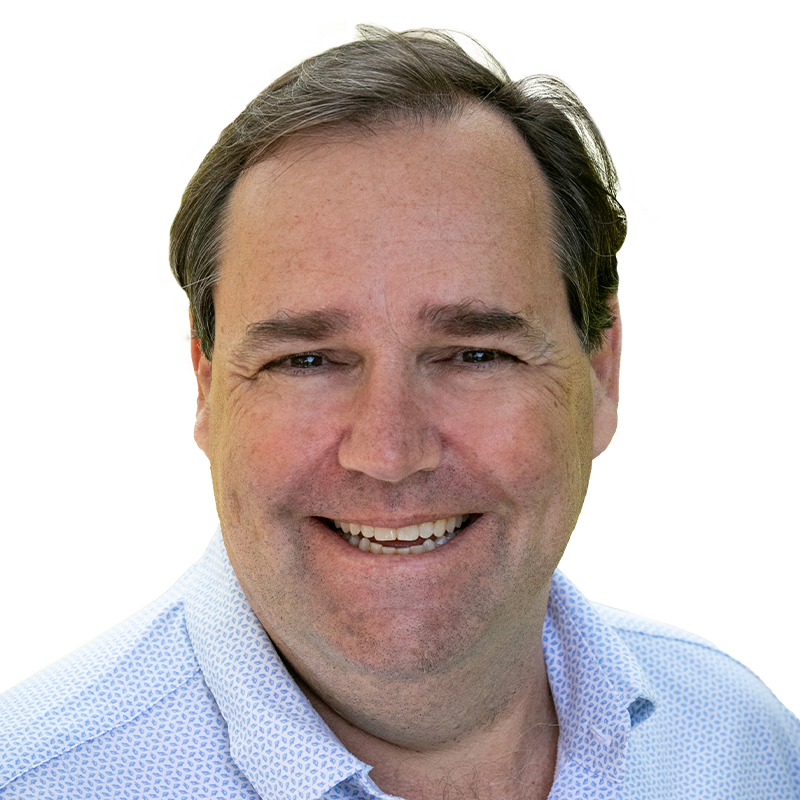
In 2017, John Marshall was giving marketing advice to big brands like Walmart, Bank of America, and Starbucks. His teenage son told him he was wasting his talents. What use was selling soap and credit cards when there was a much more important problem in the world?
That was the spark that led Marshall to found the Potential Energy Coalition, a nonprofit using the techniques of consumer marketing to sell the public on something else: climate action. “We’ve got to make a lot of changes to the global economy and how we power our lives,” Marshall said. “And we’re just not going to get there without public support.”
Around 3 billion views later, he’s seeing results. In one ad campaign, dubbed Science Moms, the organization worked with a group of climate scientists to speak directly to parents about the risks to their children’s future. Those messages increased support for climate action among politically moderate women by 25 percent, Marshall said. A campaign in Michigan tapped into local pride and promoted the state as a clean energy leader, helping to prime the way for new policies; last year, Michigan passed one of the most ambitious clean energy laws in the country. “We’ve created the conditions that made that possible,” Marshall said.
The key to good marketing, he said, is listening deeply to what people care about and meeting them where they are. He’s relying on data instead of intuition to figure out what messages work for different people.
So what has Marshall learned from years of testing? “If you tell human stories in super simple ways and then make it clear that it’s a fight against pollution, not a fight against the big amorphous thing called climate change, you really make a difference.”
Breene Murphy
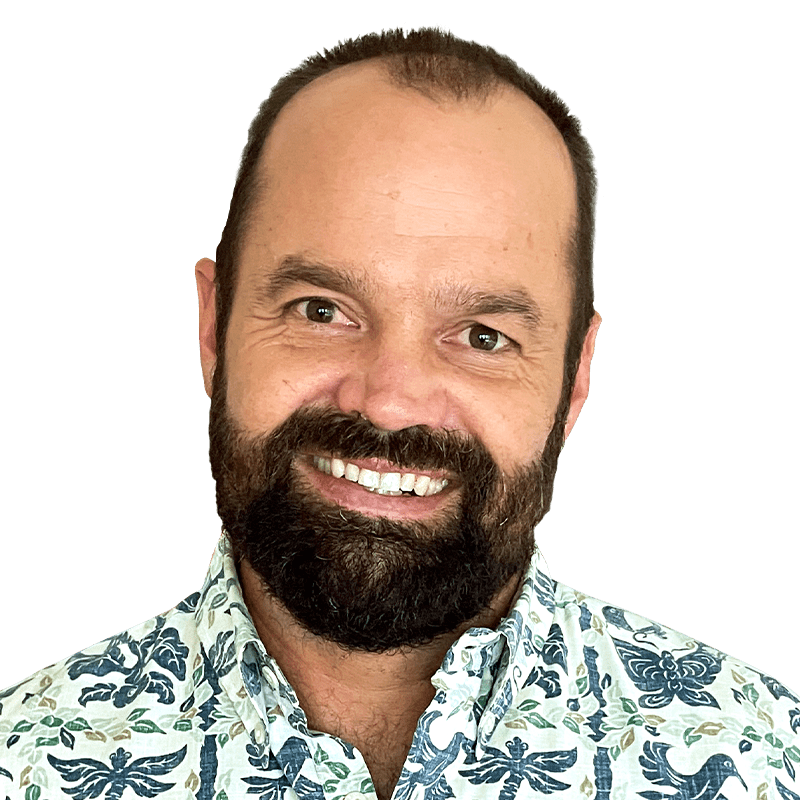
Breene Murphy never experienced a climate “aha” moment. “I actually don’t remember a time in which I wasn’t aware that we’re going through large environmental issues,” he said. He was born in Hawai‘i during a hurricane, and grew up loving the natural world.
But finding his path to a climate career proved more confounding. He spent time as a writer, but struggled to earn a living at it. He went into advertising, which he hated. Then he discovered he has a knack for economics, and dove headlong into finance. “I felt like this is something that’s really powerful. I don’t know that we’re going to solve climate change if we have the same investment infrastructure and institutions,” he said.
In 2021, he met the founders of Carbon Collective, a climate-focused investment firm, and became the company’s first employee. (He was “not a co-founder, but not not a co-founder.”) They began as green investing advisers, but saw an even bigger opportunity in working with companies to offer climate-friendly retirement plans. The firm now provides a 401(k) option that lets employees ditch big polluters entirely, instead prioritizing investments in companies that contribute to climate solutions.
Of course, most companies fall somewhere in the middle. Since Murphy became president of Carbon Collective last year, one of the things he’s most excited about is the influence the collective could wield over the market as it manages a larger piece of it. Currently, the company manages over $135 million in assets, working with more than 100 employers and around 775 individual clients. “The larger we get, the more engagement and leverage we get” to help push publicly traded companies toward sustainability, Murphy said. “But we need to get bigger first.”
Paul Presendieu
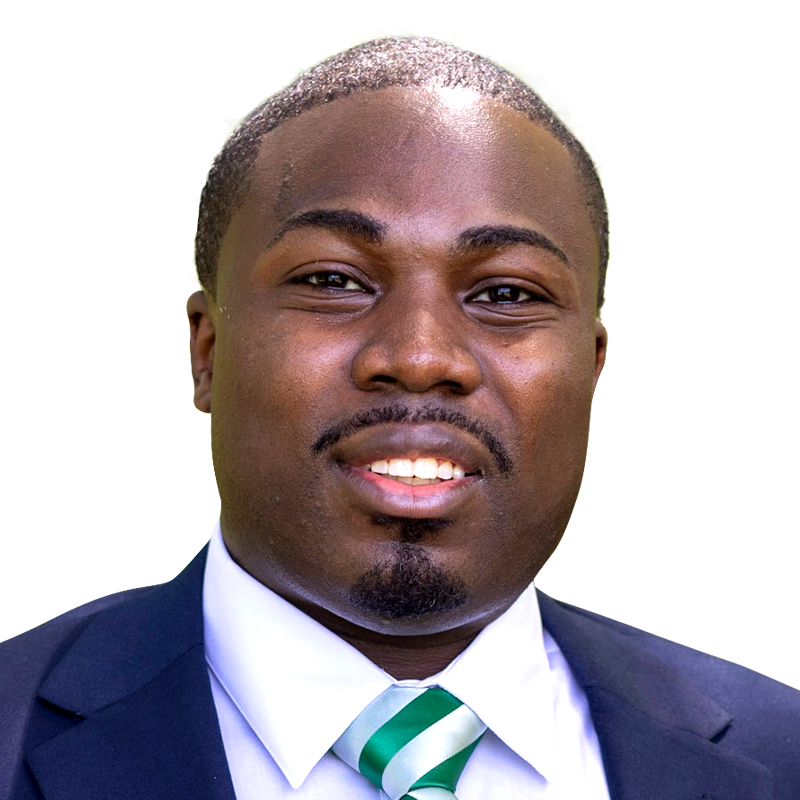
When Paul Presendieu was only 4 months old, his mother was killed by a falling tree. He later came to understand that environmental policies — like a tree ordinance, which his hometown of New Rochelle, New York, lacked at the time — could prevent similar tragedies.
Shortly after graduating from SUNY Purchase College, Presendieu spent over a year as the outreach manager for Sustainable Westchester, a consortium of 44 municipal governments working with Westchester County to implement climate solutions. But while he was working in his home county, he didn’t always feel his work was benefiting the people he most wanted to serve. “I was doing a lot of projects in affluent communities,” he said.
In 2022, Presendieu became the community engagement director for the workforce development company Soulful Synergy. He’s still heavily involved in state and local politics and advocacy, but his day job now focuses on getting those most impacted by environmental and social injustices into “green collar” careers. The company has trained over 7,000 people, including many who don’t have access to a college education. It offers courses and certification programs in clean energy, green construction, urban farming, and more — diversifying these industries while connecting underserved workers with high-value career opportunities. Presendieu has helped students land jobs at local orgs, including his own former employer, Sustainable Westchester.
“We’ve gotten people that used to be in gangs on construction sites,” Presendieu said. “People in society that are being written off, ignored, we’ve been able to completely turn their lives around and place them on a track of a growing economy.”
Lauren Salz
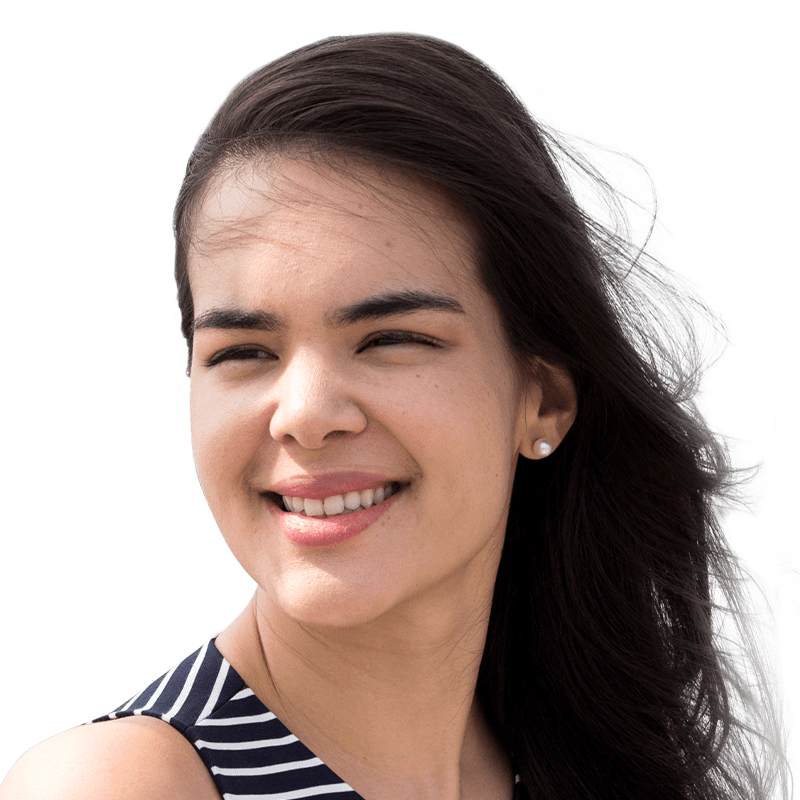
In 2011, Lauren Salz, an investment analyst, was shocked to learn that 20 percent of U.S. greenhouse gas emissions came from homes — even though the technology to decarbonize them already existed.
“That compelled me to help the market,” she said. “And so even though I didn’t know a ton about it at the time, I just had an instinct that that’s what I should be doing.” Joining forces with Andy Frank, an energy-efficiency expert, she co-founded Sealed, a climate technology company that aims to streamline the process of weatherizing and electrifying homes to lower their carbon footprints.
Over the years, Sealed tried different business models to get closer to that vision. Initially, it provided an insurance-style product that guaranteed energy savings to homes that got green retrofits. In 2018, the company adjusted to focus on advising homeowners, matching them with local contractors and covering most or all of their upfront costs in exchange for a portion of their energy savings over time.
Then, in 2022, the Inflation Reduction Act promised millions in rebates for home electrification. Once more, Sealed revamped its business and, in 2023, released “Sealed Pro,” a product to help contractors access these funds. Sealed identifies rebates, handles the paperwork, and pays the amount of the rebate upfront, making it possible for more people across more income levels to take advantage of electrification incentives. Salz says these rebates — sometimes up to $20,000 — are helping her business, and clean energy improvements, scale across the U.S. “A rebate of that size really moves the needle, especially for low- and middle-income homeowners,” said Salz.
As the IRA continues to roll out funding, Salz anticipates even more homeowners will become empowered to take the decarbonization leap (and contractors would have the resources to make that happen). “That’s where you get these big moments of market transformation,” she said.
Deenaalee Chase-Hodgdon
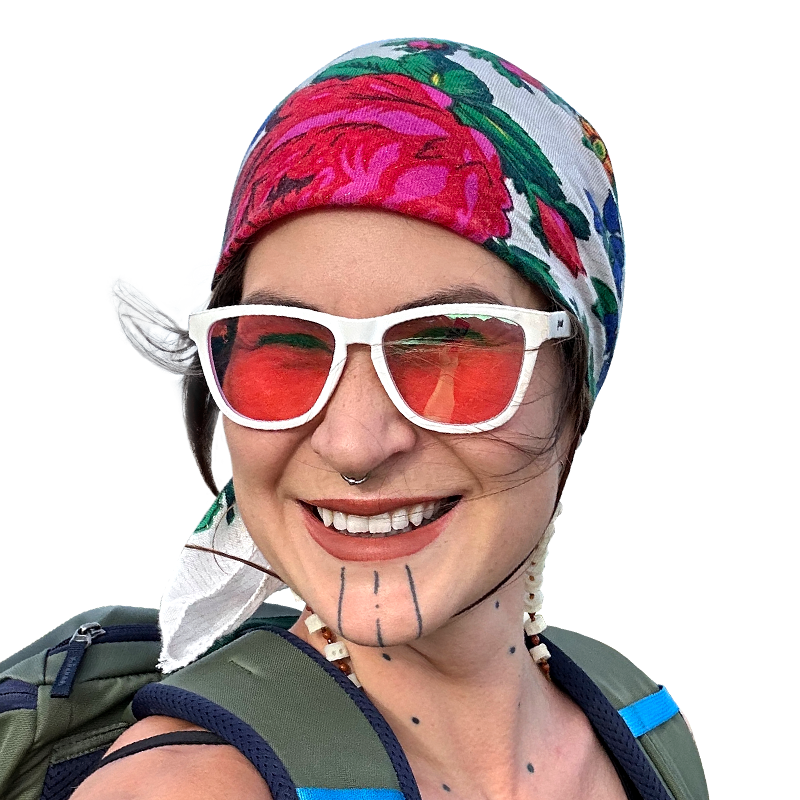
Growing up in Alaska, Deenaalee Chase-Hodgdon wanted to be a commercial fisher on the Bristol Bay, just like their dad. But as they got older, they learned more about the effects of climate change on the salmon populations — and how harmful the commercial fishing industry can be. Bristol Bay is home to the Sugpiaq, Yup’ik, and Dena’ina Peoples; Chase-Hodgdon, who is Deg Xit’an Dene and Sugpiaq, wanted to be part of the sustainable future of fishing — and food security for their Native community.
“I started really thinking, ‘What would a just transition at Bristol Bay look like for the sockeye salmon fishery to be sustainable?’” they said.
After losing their father in 2014, they did eventually follow in his footsteps by becoming a commercial salmon fisher. And last May, they co-founded the Smokehouse Collective. The mutual-aid group is designed to be a contemporary fish camp that can host communities that are facing salmon decline, revitalizing traditional harvesting and processing methods and also, someday, trade systems. The group is creating a network of Alaskan Native communities “to hold ceremonies and space for gathering, and to hold conversations about how we want to align and be in relationship with one another as we continue to face a loss of biodiversity,” they said. The goal is not only to ensure food security and food sovereignty, but also to keep the community invested in protecting Bristol Bay and push outside entities, like the fishing industry, to do the same.
The collective bought a portable fish processing plant last spring, and also recently acquired a skiff and setnet gear. As the project grows, Chase-Hodgdon wants to process other traditional foods like moose, caribou, and berries.
Amy Bowers Cordalis

Just weeks ago, when construction crews removed the last of four hydroelectric dams on the lower Klamath River, they reopened more than 400 miles of river in Oregon and Northern California that have been overheated and poisoned with toxic algal blooms for decades, bringing endangered salmon back to a landscape that is sacred to several Indigenous nations.
This transformative event might never have happened were it not for the persistence of Amy Bowers Cordalis. Cordalis decided to go to law school in 2002 when the federal government diverted river water to farmers, killing as many as 78,000 salmon. After cutting her teeth on water law in Colorado, she returned to the Klamath Basin and later became general counsel for the Yurok Tribe — the first woman and the first Yurok tribal member to hold the position.
She’s used several legal strategies to advocate for her tribe and the river salmon. As she built bridges by negotiating with electric utility Pacificorp over dam removal and collaborating with farmers to design restoration projects, she also used the Endangered Species Act to sue the federal government over how it manages the river. In 2020, she and her husband founded a nonprofit that continues to assist the Yurok and other tribes with water and land conservation efforts.
Cordalis sees the dam removal as just the beginning. She’s now seeking millions from the federal government to restore other damaged environments in the river’s upper basin.
Describing what the river might look like if her work succeeds, Cordalis paints a picture of a river basin that functions as one breathing entity, uniting salmon runs, organic farms, and tribe-managed forests. “There’s a balance between nature and species and humans,” she said. “I’m closing my eyes and I can envision what it looks like.”
Wendy Johnson
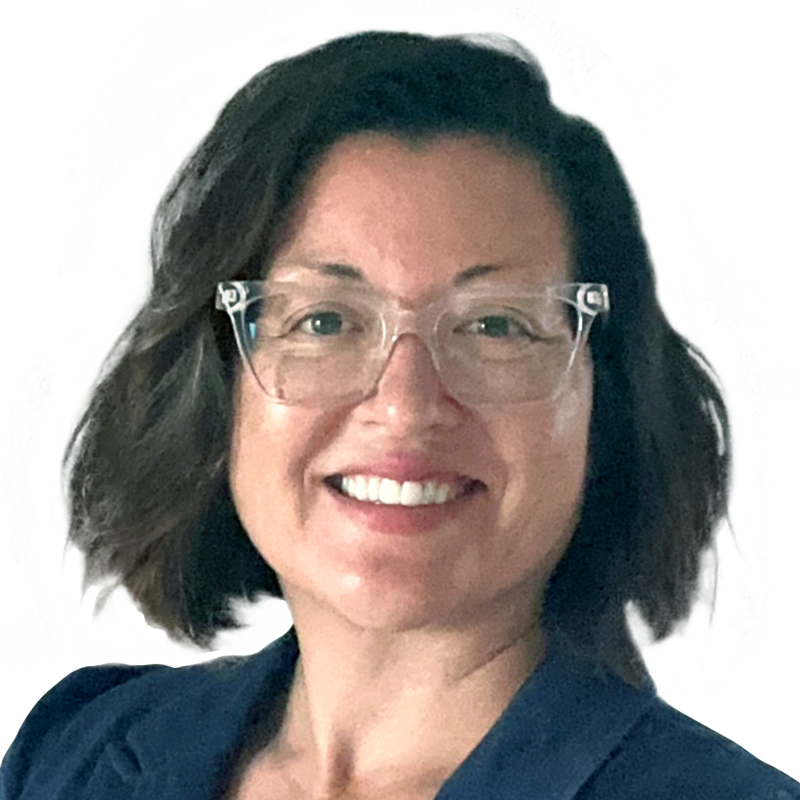
Wendy Johnson grew up outside Charles City, Iowa, surrounded by an endless expanse of corn, soybeans, and hog troughs. She watched her parents struggle to keep their farm alive — decades of monocultural production and declining crop prices had sapped the life out of the region. Johnson got out as soon as she finished high school, eventually leaving the Midwest for Los Angeles.
A decade later, she began to wonder about other possibilities for the land that had been in her family for three generations. She and her husband moved back to Charles City in 2010 and set about turning a portion of the family’s old farm into a model for sustainable, climate-smart agriculture. At what is now Jóia Food Farm, Johnson introduced a perennial grain called Kernza, ewes and cattle to graze and fertilize it, and thousands of trees to reduce erosion. She also carved out a riparian buffer along a stream that winds through the farm. Earlier this year, during a historic flood, hers was the only land that didn’t go underwater.
Johnson hopes more farmers in the Midwest follow her lead, but she knows they need incentives and infrastructure to do so: “I think farmers are watching, but they’re hesitant to make change unless there’s things that support that change.” She now advocates for these practices in local and regional farming organizations, and is also lobbying for measures in Congress’ upcoming farm bill to help young farmers working on smaller plots.
“I make noise,” she said of her advocacy against traditional monocrop farming. “People tell me, ‘This is just how it is.’ Well, it’s just how it is because there’s no one out there advocating for something different.”
Annette Kleiser

On January 3, 2023, Annette Kleiser was on a work trip in Spain when a colleague called with the news. The honeybee vaccine she’d been developing had just been approved for commercial sale and use by the U.S. Department of Agriculture.
“I just teared up,” said Kleiser, a former biologist who has built a career advising academics on how to turn their research into inventions. The vaccine is the first ever made for any insect, and a desperately needed solution to American foulbrood, a bacterial disease that decimates hives worldwide and impacts yields for the crops they pollinate.
For Kleiser, the work started over five years ago when she met Dalial Freitak, a scientist who first proposed the vaccine as a researcher at the University of Helsinki. “And I was like, ’Why hasn’t anybody taken this on?’” said Kleiser. “We know honeybees are dying around the world, and we know that they are extremely important for our survival.” The two teamed up, and in 2018, they co-founded Dalan Animal Health to bring the invention to market.
Their vaccine is administered through a sugar paste — not tiny needles and Band-Aids, Kleiser joked. In the first year after the vaccine was approved in the U.S. and Canada, it treated approximately 20,000 colonies. Kleiser hopes that the same technology can be used to tackle other ailments and save other species.
“We’re not going to solve climate issues without insects and honeybees,” she said. As warming temperatures threaten crops and pollinator habitats alike, Kleiser hopes Dalan’s work can reshape how the world thinks of insects. “They are a key link in the food supply chain, and our food security globally depends on them,” she said.
Rose McAdoo
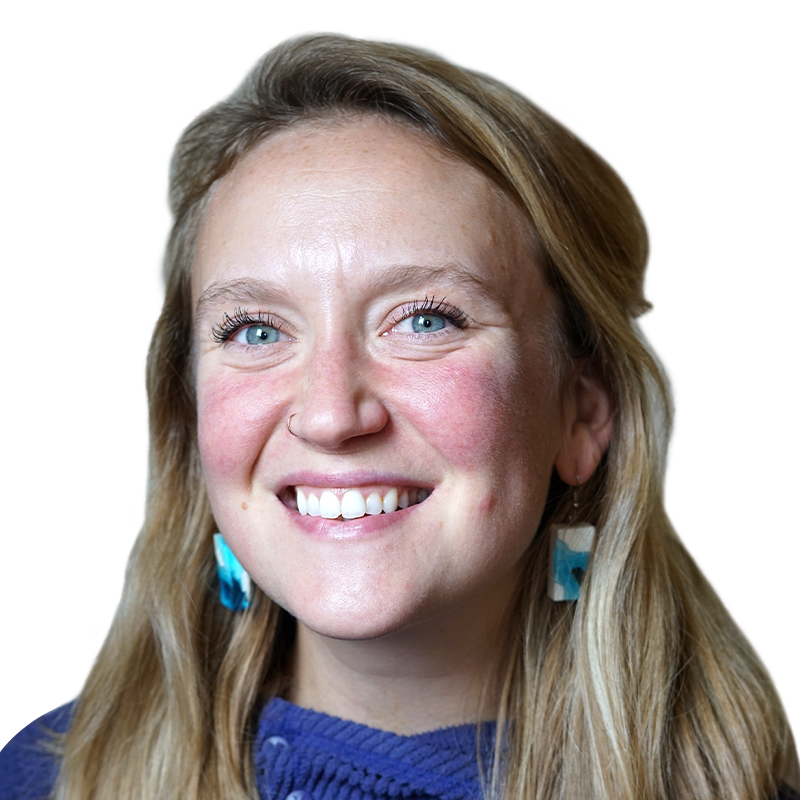
When she was 19, Rose McAdoo visited Alaska for the first time and fell in love with glaciers. Fifteen years later, McAdoo has built a career around them, spending half the year in Alaska, where she works as a glacier guide, and the other half in Antarctica, where she manages a NASA research camp on an ice shelf. She’s trained in crevasse rescue and wilderness medicine, but McAdoo also brings an unexpected skill to her beloved icy landscapes: pastry chefing. She uses her culinary background to create edible, approachable art that teaches people about glaciers and the climate risks they face.
“A huge part of my practice,” McAdoo said, “is creating joyous and celebratory spaces that make it easier for people to engage in climate change discussions.”
McAdoo has created everything from a cake illustrating the diminishing snowpack on Mount Baker to lollipops made of glacier water, often baking in remote locations and incorporating ingredients from her surroundings. She shares her creations in photos and films on social media and beyond. Recently, McAdoo cooked up a box containing five signature treats, accompanied by a booklet explaining their connections to glacial science alongside original photography and personal anecdotes. She sold 206 across 34 states.
“I’m still trying to figure out how to replicate that,” she said. “I mean, we crafted thousands and thousands of individual pieces.”
While on an artists’ sailing trip around an arctic archipelago, McAdoo crafted a cake depicting a tidewater glacier calving into the sea. She then took a time-lapse video of everyone aboard slicing into the cake, representing how human-caused climate change is eradicating glaciers. McAdoo plans to transform that time-lapse, a collection of other photos, and an enlarged version of the cake into her first museum exhibit. It will be titled “Eating Away.”
Ajulo Othow

Ajulo Othow, a North Carolina native, grew up intimately understanding economic disparities in the South. The throughline of her life, she said, has been “helping marginalized communities transition as quickly as the rest of the economy transitions toward clean energy.”
Othow began her career in rural policy and humanitarian development, and, after earning her law degree, worked as a legal specialist for solar companies. In 2017, she took the leap and founded her own company to bring those two passions together.
“I wanted to figure out a way to deploy solar energy in a way that could also positively impact the rural communities where these projects are sited,” she said.
Othow created EnerWealth Solutions, a distributed solar development company, to address disparities in clean energy access for rural Southern communities and help small-scale farmers diversify their income. The company aims to work with small landowners, particularly farmers, to lease land for solar panels and storage, creating new energy sources and a new source of revenue — a profit-sharing model means a portion of money goes back into the owners’ hands.
“Our utility has been benefiting from renewable energy generation for more than a decade,” she said. “It is important that everyday people also benefit from this technology.”
In 2020, Othow also helped launch B.O.S.S. — Black Owners of Solar Services — a trade association to empower underserved business leaders in clean energy sectors. Since its inaugural Solar Equity Summit, Othow said the number of members has more than doubled, with over 100 businesses participating nationwide and a $6.3 million funding agreement with the U.S. Department of Energy.
For Othow, solar technology is a “silver bullet” for climate action. “It is a single intervention that can yield multiple impacts,” she said.
Bill Pluecker
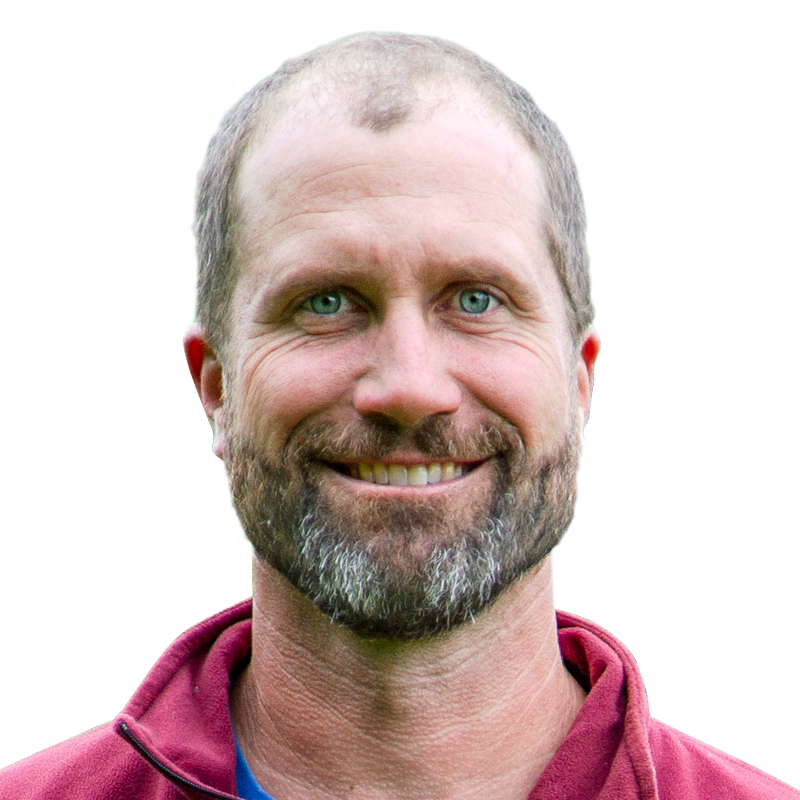
Bill Pluecker has been farming in Maine for nearly 20 years, practicing an ultra-eco-friendly variety of agriculture he calls “hard-corganic.” In the past few years, however, he’s taken on a new mission — to protect fellow farmers from “forever chemicals.”
In the late 2010s, Maine discovered that per- and polyfluoroalkyl substances, or PFAS, were ubiquitous across the state’s farmlands. Not only were they in soil and well water, they were getting into crops and milk from dairy cows. It turned out farmers were unknowingly applying PFAS to their fields via “sludge,” a kind of fertilizer made from sewage and promoted to farmers for decades by the Maine Department of Environmental Protection.
Pluecker became an independent state representative in Maine in 2018, and once he learned about the dangers of PFAS, it became a motivating factor for his political career. His own land was free of contamination — “thank the Lord,” he said — but dozens of other farms weren’t. A friend he’d known for years was forced out of business.
Two years ago, Pluecker introduced a bill that would soon become the nation’s first state-level ban on the spreading of PFAS-contaminated sludge. He also helped set up a $60 million PFAS contamination fund to support long-term monitoring of the toxic chemicals — and to compensate affected farmers.
“We turned off the tap,” and gave farmers a place to turn to when PFAS contamination threatens their financial stability, Pluecker said.
Through the Maine Organic Farmers and Gardeners Association, where Pluecker is a public policy organizer, he’s now working to bring sludge bans to other states and establish a national contamination fund as part of the next farm bill.
“Sludge-spreading is something that people do all over the country,” he said — so farmers everywhere are going to need help.
Tara Rodríguez Besosa
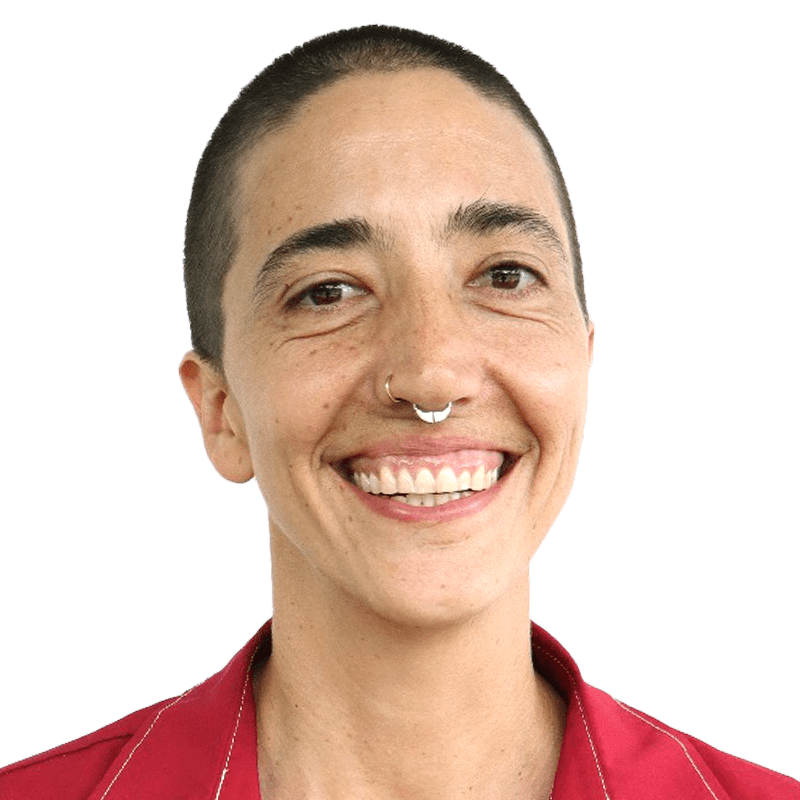
After attending architecture school in New York, Tara Rodríguez Besosa moved home to Puerto Rico in 2009. Their mother had just been through a rough divorce and was reinventing herself by moving to a farm to practice organic agriculture. “I got involved because I was very excited for her,” Rodríguez Besosa said. Back at home, they also opened up a bar and event venue called El Local en Santurce (The Local in Santurce). They began working with their mom at farmers markets, trading with other growers, and using the ingredients at El Local.
That was their introduction not only to the organic local food scene, but to the archipelago’s agroecology and food sovereignty movements. “In Puerto Rico, everything is tied in some way or another to politics,” they said.
In 2010, they co-founded El Departamento de la Comida (The Food Department), a CSA, restaurant, and store built on local, sustainable produce and relationships with the people who grew it. After hurricanes Irma and Maria devastated the islands and revealed the need for real, long-term recovery efforts, the initiative was reborn in 2020 as a nonprofit cultural and food hub dedicated to building alternative spaces that support food sovereignty and community resilience, with a particular emphasis on the LGBTQ+ community. Today, the 15-person team runs projects like a tool library, a community seed exchange, and a kitchen, while offering workshops on sustainable agriculture and providing microgrants for food projects.
“It’s been a lot of putting into reality these visions of what sustainable, intergenerational, decolonizing food communities look like,” said Rodríguez Besosa They’re also doing that on the small communal farm where they live for half of the year, called OtraCosa: “a queer, collective land trust in the making.”
Amos White
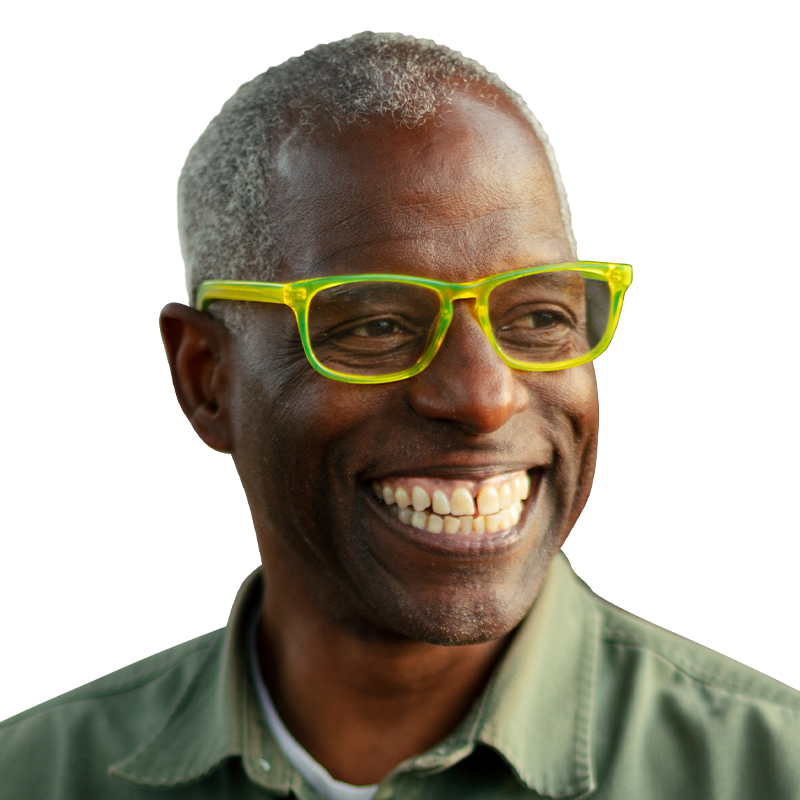
Amos White remembers the day his preschool class ventured across the street to collect helicopter seeds that had fallen from a sugar maple tree and nestle them into egg cartons. “You never forget the first tree you planted,” White said. That tree still stands behind his childhood home in Bexley, Ohio.
Today, White’s full-time job is helping people create their own planting memories. He started down this path in 2017, when a friend asked him to join a local sustainability task force in Alameda, California. In the following years, he helped write, and ultimately pass, climate emergency declarations for the city and county. Around the same time, he was inspired by the 2019 youth climate strikes. “It blew my mind,” he said. “I was like, ‘It’s on. The movement’s on.’”
A few weeks later, inspiration struck. “I wake up in bed on a Sunday morning,” White said, “And I’m looking at my palm. And right then a seedling popped in my hand — that trite, cliché image of a palm with a seedling of dirt popped in my mind’s eye.” He realized that planting is not only empowering, it’s joyful. It releases dopamine, which keeps people coming back. “That’s when I knew I wanted to put a tree in every single person’s hand.”
With that idea, he founded 100K Trees for Humanity. Working with volunteers and organizations, the group has facilitated the planting of nearly 1,000 trees throughout the Bay Area so far, prioritizing frontline neighborhoods that tend to lack tree cover, and the shade, cleaner air, and ecosystem resilience trees provide. Last year, he worked with an elementary school in Hayward, delivering 1,000 acorns so students could start their own oak seedlings: “Just like I did when I was in preschool.”
Theresa (Isa) Arriola
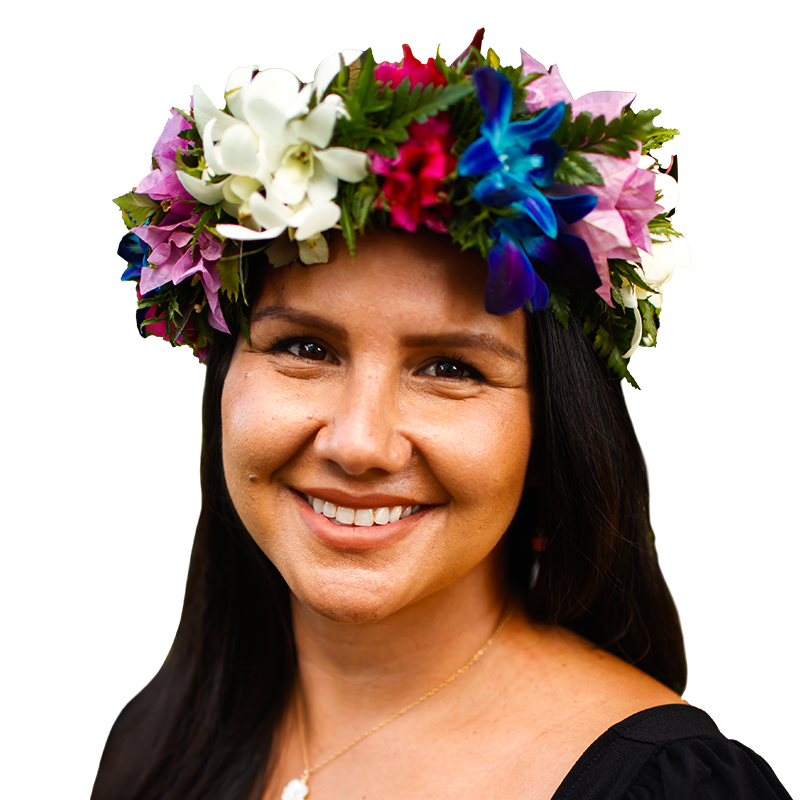
When the Pentagon announced in 2013 that it planned to turn part of the island of Pagan in the Northern Mariana Islands into a bombing range, many Indigenous residents were shocked. They had already agreed to allow the U.S. military to lease an entire island in their U.S. commonwealth for bombing practice, and two-thirds of another for a military base, and now the military wanted even more land for destructive training.
Among those outraged was Theresa (Isa) Arriola, an Indigenous woman of Chamorro, Kosraean, and Irish descent, from the island of Saipan, the commonwealth’s capital.
“This is land that’s connected to our very being,” she thought. “It’s just so presumptive, so cavalier, this idea that you can just take.”
Over the next several years, Arriola read and decoded thousands of pages of dense environmental impact statements, drafted opinion pieces, and spoke with local media about the plans. She helped organize community meetings and push for a local legislative resolution to halt military planning. Along with longtime community advocate Cinta Kaipat (who passed away in 2023), she also co-founded the grassroots organization Our Common Wealth 670 to increase awareness of militarism.
The community’s resistance worked: In 2022, the military abandoned its Pagan bombing range proposal. But Arriola says there’s more work to do to empower her community and illuminate how militarization affects their daily lives.
She sees her advocacy as intertwined with climate justice — not only is the U.S. military one of the world’s biggest polluters, but defense is an easy excuse to justify rolling back environmental protections.
“It’s not just about reducing emissions,” she said. “We also have to take a look at what are the daily and mundane ways that militarism is skewing our relationship with everyone around us.”
Alicia Brown
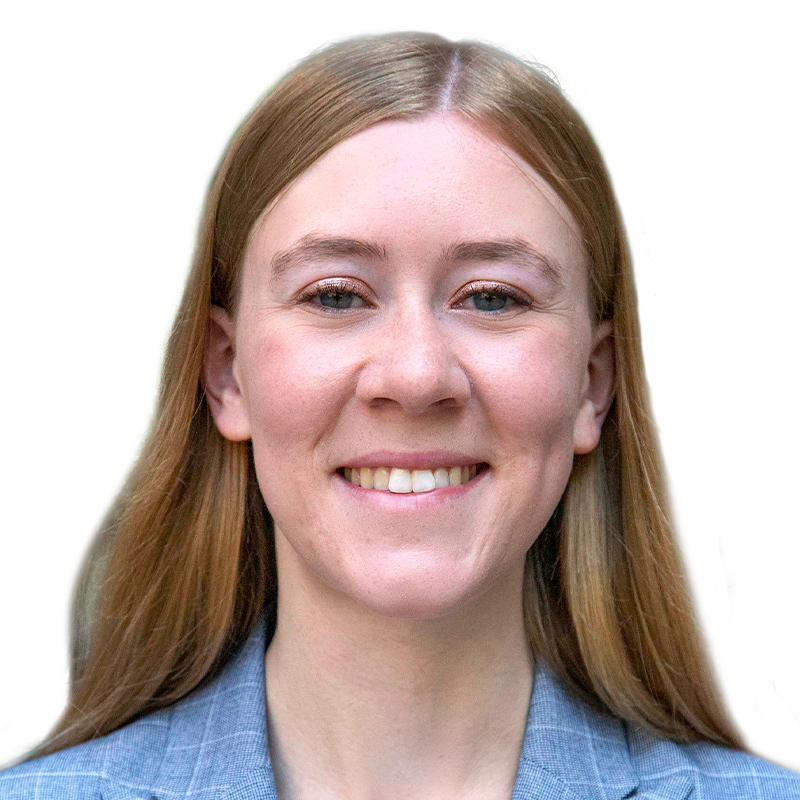
When Hurricane Katrina made landfall, Alicia Brown was 7 years old and living in rural southern Mississippi. She and her family evacuated. Her grandparents, who lived on the Gulf Coast, had to be rescued via boat.
“Seeing how rapidly that storm intensified — and knowing that the actions that we’re taking today make storms like that infinitely more likely — really motivated me to find clean energy solutions that were also workable,” Brown said.
Brown, an engineer by training, has sought to implement those solutions at an often overlooked site for effective climate action: municipal government. “We vastly underestimate what we have control over” at the local level, she said.
As an energy analyst for the city of Savannah, Georgia, she helped write its plan for achieving 100 percent clean energy by 2035. But one thing the city couldn’t control was its energy grid; the most important decisions about power generation were being made by state-level utility regulators. So Brown brought together a coalition of five cities across the state with similar clean energy goals to testify at the Georgia Public Service Commission’s hearings — an innovation that’s since been replicated by groups of cities in other states.
Until June, Brown served as Savannah’s interim director of sustainability. While working for the city, she dreamed up a plan to provide low-income residents with rooftop solar arrays. The pilot program was so successful that this year the EPA awarded $156 million to Georgia BRIGHT, an organization Brown now runs, to expand it across the state.
Perhaps one trait unites her diverse accomplishments, and it’s what she plans to bring to her new role at Georgia BRIGHT: “I’m really good at seeing problems and mobilizing the stakeholders to actually come up with a solution and do what was previously seen as impossible.”
Jessica Dandridge-Smith
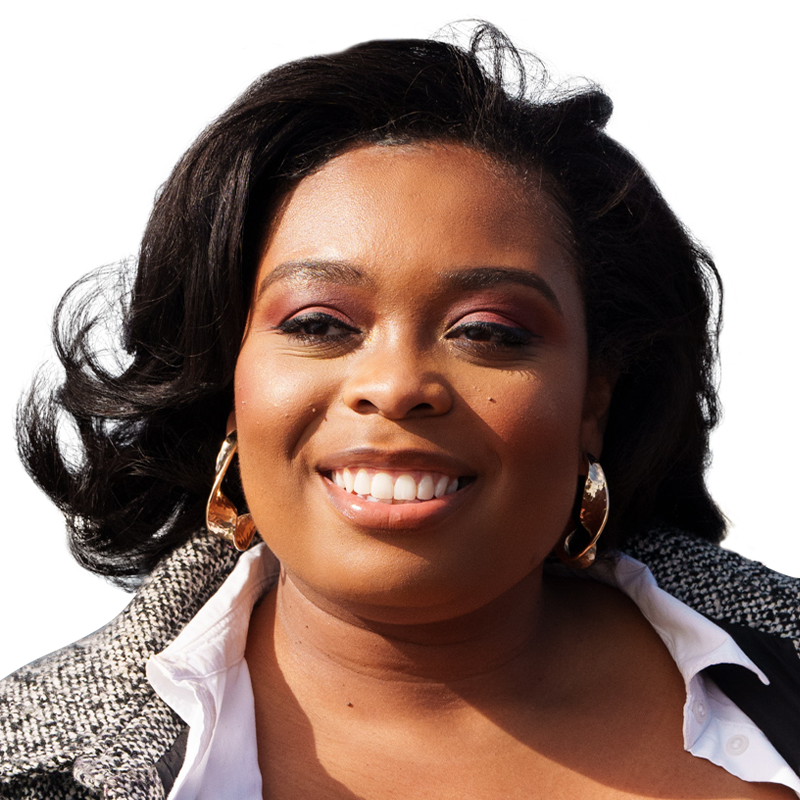
Jessica Dandridge-Smith grew up in Louisiana, where “water is a part of everybody’s story.” Hers took a radical turn the day before her 16th birthday, when Hurricane Katrina hit. Seeing the devastation, and its concentration in New Orleans’ low-income, Black neighborhoods, angered her. “My mom was like, ‘You need to do something with all that frustration and that anger,’” she said.
Over the next 14 years, Dandridge-Smith worked with more than two dozen organizations, developing a deep knowledge of community engagement, politics, and the South.
In 2019, she became executive director of The Water Collaborative. A group of engineers and architects in New Orleans had founded the organization four years prior to address failings in the city’s approach to water management. “I was asked to be the ED not because I had a background in environmental science or in hydrology. It was because I have a background in people,” Dandridge-Smith said.
She refocused the organization’s mission on environmental and water justice, tackling projects from green infrastructure and storm resilience to water access, quality, and affordability.
One big push is for a stormwater utility fee that would shift the cost of municipal stormwater drainage from taxpayers to companies, nonprofits, and state entities. In addition to financing operation of the city’s massive pump system, this revenue would support stormwater resilience efforts like reforestation and home retrofits. Every aspect of the proposal was written with community input — not one district was left out of the process, Dandridge-Smith said. She and her collaborators hope to see the measure on the city’s ballot next year.
Dandridge-Smith’s work also makes space for joy, whether it’s a pool party fundraiser or an educational boat trip with local artists. “We’re always trying to find innovative ways to have fun, exciting conversations with water at the center.”
Monica Huertas
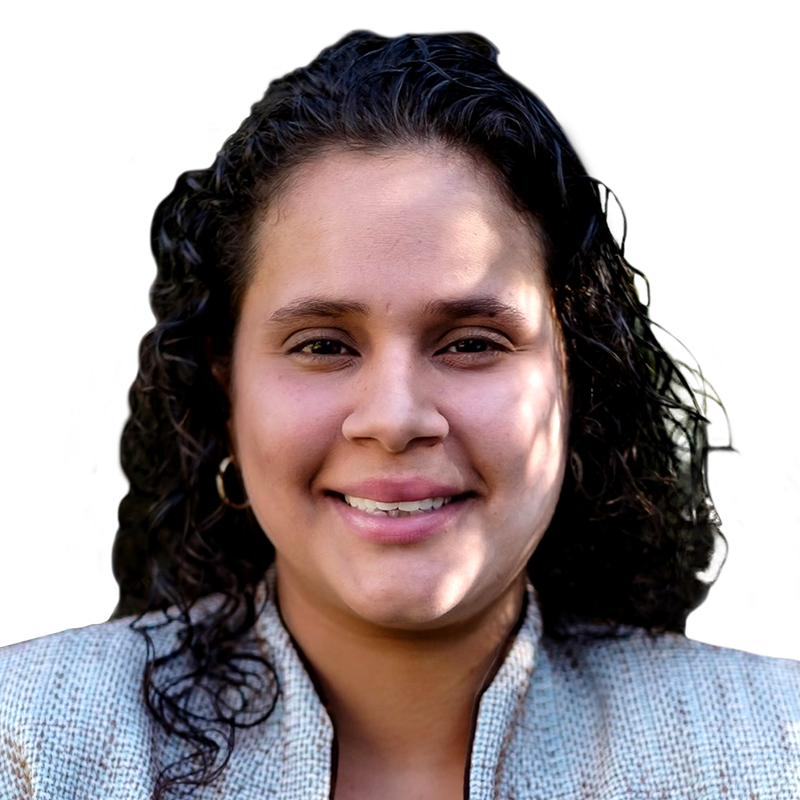
When Monica Huertas bought a house near the Port of Providence, Rhode Island, she was proud of the achievement it represented for her family. She was raised between Providence and Puerto Rico and had experienced periods of homelessness. “We thought, ‘This is great — kind of like the American dream,’” she recalled.
But soon, she realized something was very wrong. She was advised against growing tomatoes in her backyard. Her 1-year-old son had high levels of lead in his blood, and another of her children was hospitalized repeatedly for asthma exacerbation.
People near Providence’s deepwater port are exposed to air pollution from the area’s high concentration of heavy industry. “We have tar, we have oil, we have gas, we have salt piles, concrete, asphalt — very bad, bottom-of-the-barrel things,” said Huertas. And many residents don’t know that the area’s high rates of asthma and cancer aren’t normal.
She decided to do something. First, she organized a campaign to keep a proposed liquefied natural gas facility out of the port. Although that effort was unsuccessful, in 2020, Huertas turned her efforts into an organization committed to fighting the expansion of toxic industries: the People’s Port Authority — so named because, unlike other harbors, the Port of Providence lacks a central governing structure that residents can hold accountable for environmental injustices.
In its short life, the People’s Port Authority has successfully halted a liquefied propane gas project, helped write Providence’s climate justice plan, and directed city funds to “green justice zones” in frontline communities. Above all, Huertas said, it’s about putting the power in residents’ hands. “We work with the community, but we also work with the regulators, so they know that they can’t just come in and ask us to fill a survey out; no, we have to be there.”
Tony Jordan
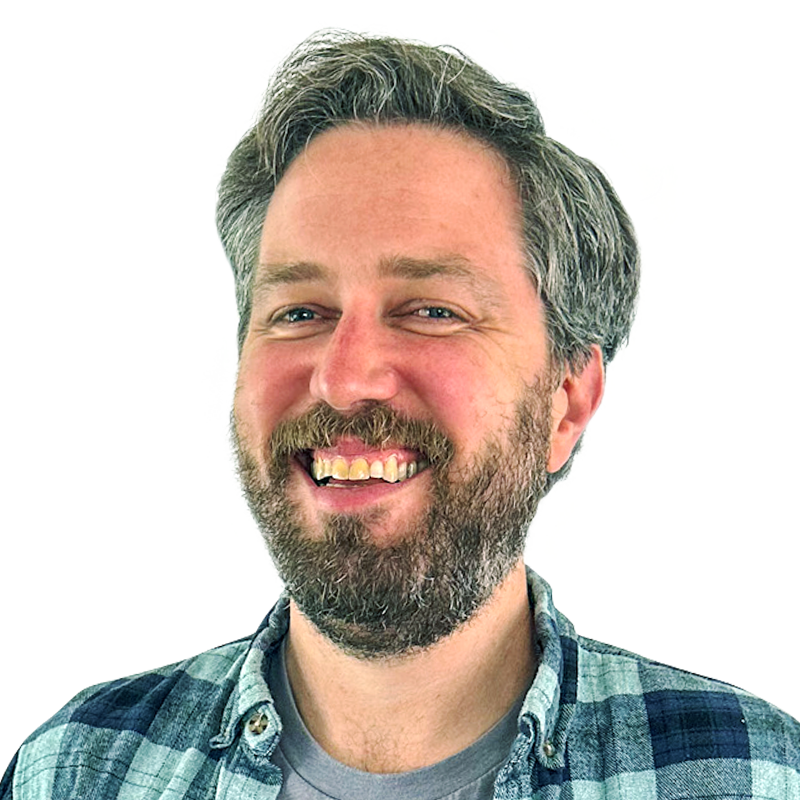
Tony Jordan became a leading advocate for parking reform because of a book. The High Cost of Free Parking, by Donald Shoup, outlines the history of American parking minimums, anachronistic laws that require a certain number of parking spaces to be built alongside different types of construction. For a bowling alley, municipal parking minimums might demand three or four spaces per bowling lane, or one per pew at a funeral home.
When Jordan read the book in 2010, he regarded parking lots as many people do: just a part of the landscape. Learning how free parking had helped create sprawling, disconnected cities with inadequate transit infrastructure, “I felt like I was eating a hamburger and reading The Jungle,” he said, referring to Upton Sinclair’s gruesome exposé of the American meatpacking industry.
Shortly after, Jordan began organizing fellow residents of Portland, Oregon, to oppose antiquated parking rules. They won a significant victory in 2016 when the city dropped plans to introduce parking minimums to one of its most densely populated and walkable neighborhoods. But Portland was just the beginning — in 2019, Jordan started the Parking Reform Network, or PRN, as a way to connect experts and organizers around the country fighting against bad parking policy.
Over the past few years, PRN has lent expertise, funding, and organizing power to successful parking reform campaigns in a number of cities, including Duluth, Minnesota, and Austin, Texas, which repealed their parking minimums last year. Ten Oregon cities also passed parking reforms in 2023. Thousands of American cities still have parking minimums on the books, though, and Jordan said it’s his mission over the coming years to help overturn them.
Molly Kawahata
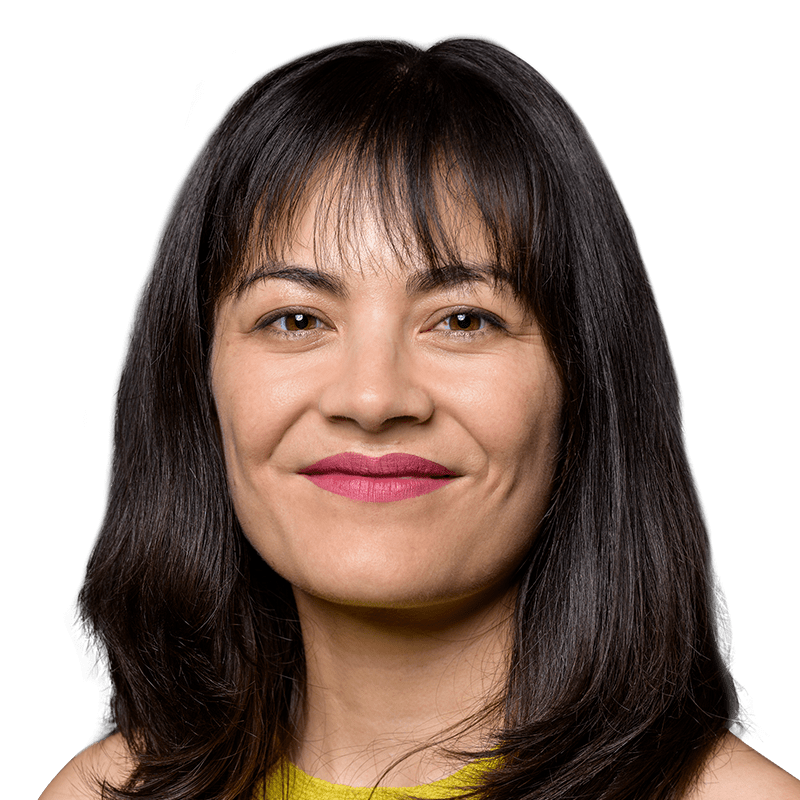
Looking back on her teenage years living with undiagnosed bipolar II disorder, Molly Kawahata described herself as “a hopeless person.” Still, she found inspiration in Barack Obama’s underdog presidential campaign and his emphasis on possibility. “In retrospect, there’s a takeaway in that,” Kawahata said. “You don’t actually need to be a hopeful person for a hopeful message to appeal to you.”
She joined the student effort to turn out voters, and after earning a degree in psychology from UC Berkeley, Kawahata became a White House climate advisor. There, she had a realization. Climate progress requires systemic change. That requires policy, which requires elected officials, who require public support — and that requires people to feel emotionally connected to the issue. “That was the start of me thinking about narrative change, and how if we get the narrative right, then maybe all can follow.”
After leaving the White House, she founded Systemic Impact Strategies, a consulting firm focused on shifting the climate conversation toward solutions and organizational change. Her work leans heavily on the science of hope to inspire action. “’It’s literally like, steps one, two, three, four, five. Here’s what you can do today.”
Kawahata also gained attention as the subject of a Patagonia documentary, The Scale of Hope, documenting her quest to scale one of the most imposing peaks in ice climbing, while reflecting on her mental health journey and climate advocacy.
The film features a montage of clips in which Kawahata repeats a simple call to action: Register people to vote. She continues to focus on elections as a board member for the Environmental Voter Project. And, when it comes to voter turnout, she says hope is crucial there, too. “If people don’t think things can be better and that they have power to make them better, you can’t get mad at them for not voting.”
Oscar Londoño
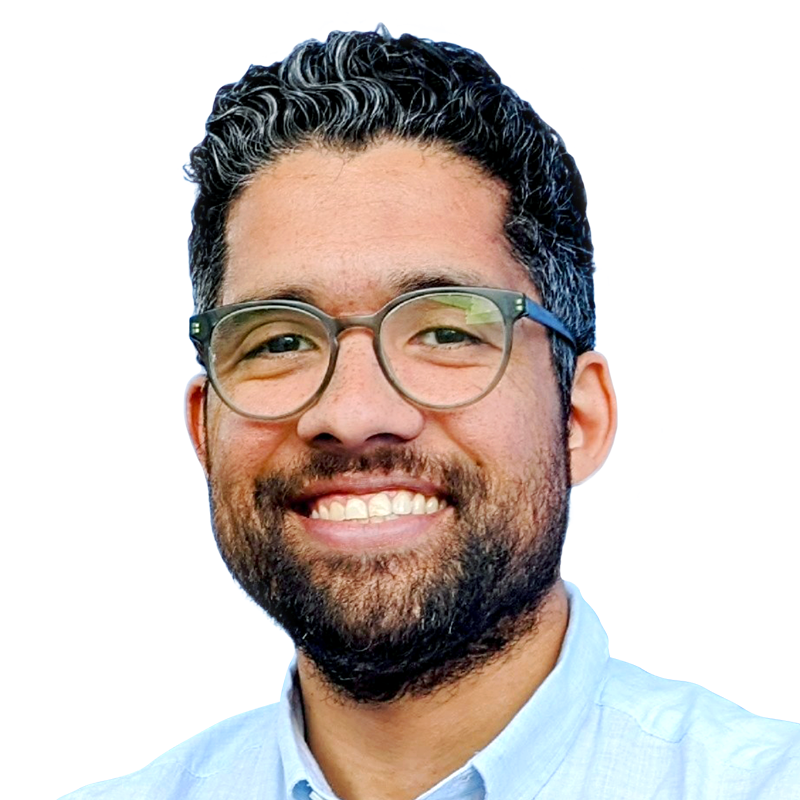
Growing up in an immigrant family in Miami, Oscar Londoño always understood just how essential immigrant workers are to the economy — and how vulnerable they often are to abuse, exploitation, and, increasingly, climate change.
In law school, he became enamored with the “worker center” model, a type of organization that supports laborers who are excluded from unions and other formal protection, like farmworkers and day laborers — many of whom are undocumented. In 2020, Londoño became co-executive director of WeCount!, a member-led immigrant worker organization in South Florida. He and his team began asking members to share their most pressing concerns. “One thing that we heard constantly over that process was this issue of heat,” he said. In 2021, WeCount! launched ¡Que Calor!, a campaign to bring the issue to the forefront in Miami-Dade County.
“We drafted, alongside workers, a 19-page ordinance that was to us the most comprehensive, the most enforceable, strongest heat standard anywhere in the country,” Londoño said. It would have set an enforceable standard for protections like water, shade, and rest breaks.
But before the proposal could come to a final vote last fall, a coalition of major developers and big ag associations convinced county commissioners to delay the vote — and in the meantime, the state of Florida passed a law banning local governments from setting heat protection standards.
Although the defeat was heartbreaking, the movement is still growing. “Every single time the heat index is high or there’s a heat advisory going on, we now hear from people who say, ‘I can’t stop thinking about the workers not getting water,’” Londoño said. Advocates in Phoenix, who drew inspiration from ¡Que Calor!, worked to pass an ordinance that will protect 10,000 city workers from extreme heat. And WeCount!, working alongside others, continues pushing for a national heat standard.
Cate Mingoya-LaFortune

Cate Mingoya-LaFortune grew up in a Black community in Queens, New York, in the elbow of two major roadways. Adults often told her to study hard, so she could move somewhere healthier.
She listened, moving to Portland, Oregon, for college before finding her way back east to teach middle school in frontline communities much like the one she grew up in. Soon, she found herself repeating the counsel she’d received as a kid: work hard in school, so you can live somewhere with clean air and green spaces.
“It took me a long time to realize what a horrifying thing that is to say to a kid,” Mingoya-LaFortune said, “to tell them that you have to leave your family and your language and your culture to have access to basic human needs.”
So, she pursued a master’s in urban planning from MIT to understand how communities can claim the agency to address environmental injustices. This focus eventually led her to Groundwork USA, where she has spent the last 6 1/2 years building the organization’s Climate Safe Neighborhoods partnership, a network currently spread across 16 cities that helps community-based organizations advance hyperlocal climate solutions.
The approach involves unpacking the historical decisions that shaped a community, collaboratively identifying the most important interventions, and ultimately helping groups understand who to talk to and where to press to make change possible. In San Diego, this approach helped a community get a creek recognized as public infrastructure, then secure funding to begin removing concrete from its banks to reduce flood risks and improve access to outdoor recreation.
To help demystify the machinery of local politics for a broader audience, Mingoya-LaFortune has brought together everything she’s learned into her first book, Climate Action for Busy People, published in June.
Elizabeth Pickett
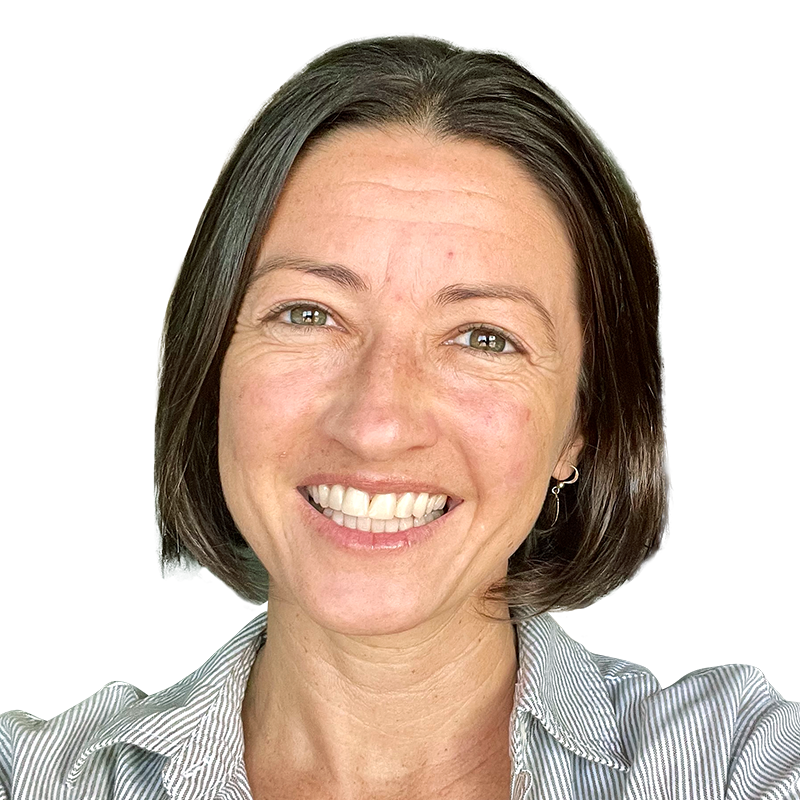
After the Maui town of Lāhainā went up in flames, killing 100 people in August last year, survivors and onlookers were left with enormous grief — and endless questions. How could such a horrific event have happened? What could be done to prevent another?
For answers, many turned to the Hawaiʻi Wildfire Management Organization, where Elizabeth Pickett had spent 16 years trying in vain to convince state leaders to take wildfire risks seriously. Pickett, who grew up in California, had moved to Hawaiʻi at age 22 for a fellowship tracking manta rays. She first became interested in wildfires after learning about their effects on coral reef sedimentation, and went on to pursue a master’s in forestry research.
For years, she and her colleagues diligently compiled state and county data to document Hawaiʻi’s fire risk. She organized community meetings to hear input from farmers, ranchers, and other stakeholders. She wrote numerous wildfire plans — including West Maui’s, but also for far-off Pacific nations like Palau. She watched as legislation died, funding never appeared, and inaction persisted, despite the clear and growing threat.
By the time Lāhainā burned last year, Pickett had grown disillusioned. Running a barebones nonprofit was challenging work, on top of parenting in a childcare desert. She briefly wondered whether it was worth it.
Then the fire happened. And suddenly the questions came pouring in. Hawaiʻi teachers needed curricula to teach their students about wildfires. Land managers wanted to know what fire breaks to install. The Department of Health wanted to train their nurses on wildfires. Pickett took the calls.
“We laid that groundwork strategically place by place, layer by layer,” she said. “We were able to meet the moment.”
Pickett hopes her work will ensure that the islands will be prepared for future wildfires, even as climate change increases their threat.
Ryan Reed
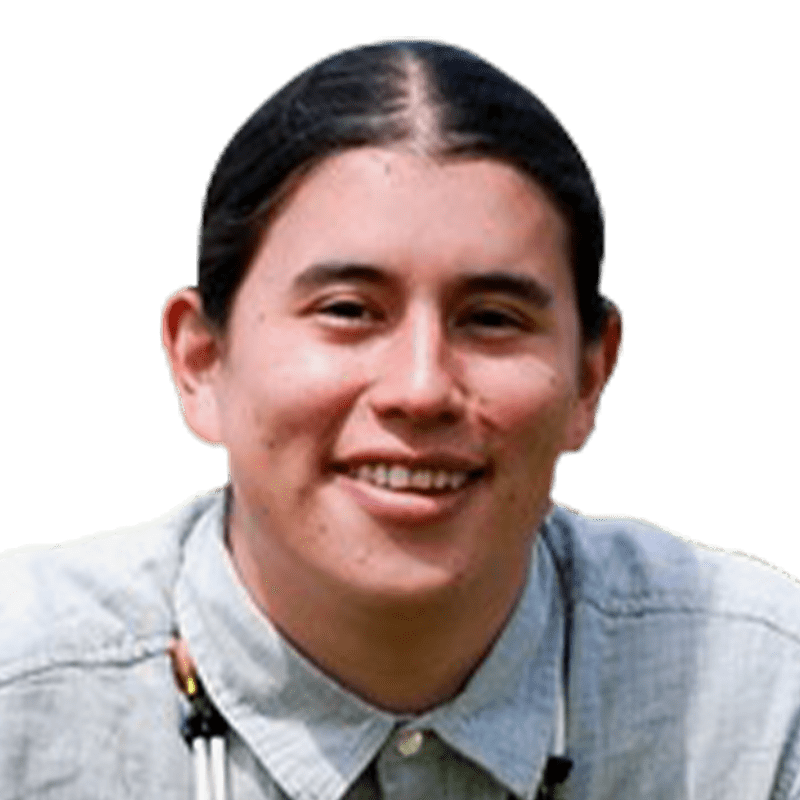
For many Californians, fire is a terrifying consequence of climate change. But to Ryan Reed, who is Karuk, Hupa, and Yurok, it is also an essential part of the ecosystem — one whose absence has increased the risk of catastrophic infernos. “A lot of Indigenous people across the world understand that the use of fire is a significant tool in our toolbox that we need to help us manage the landscape in a sustainable way,” he said.
In 2022, Reed and three other young people co-founded FireGeneration Collaborative to transform the country’s approach to fire management. The group’s priority is diversifying the firefighting workforce and the entities that determine fire policy, with an emphasis on bringing Indigenous and youth perspectives to the table.
Reed, who is working toward a master’s degree in forestry at the University of California, Berkeley, is also a wildland firefighter with the U.S. Forest Service.
FireGen lobbied to get him a seat on the federal advisory committee amending the Northwest Forest Plan, which guides land management in the region. The plan is being amended for the first time since its creation 30 years ago. At 24, he’s by far the youngest person on the committee, and the only wildland firefighter.
It’s challenging, he says, working for an agency that barred his ancestors from practicing their traditional uses of fire, often through violence. But he appreciates the opportunity to bring these issues to light within the committee — and also the need to balance the use of healthy fires with the control of dangerous ones. “At this point in time, we can’t not have fire suppression,” Reed said. “We need to increase the amount of good fire that we have on the landscape, too, but we can’t do one without the other.”
Jean Su
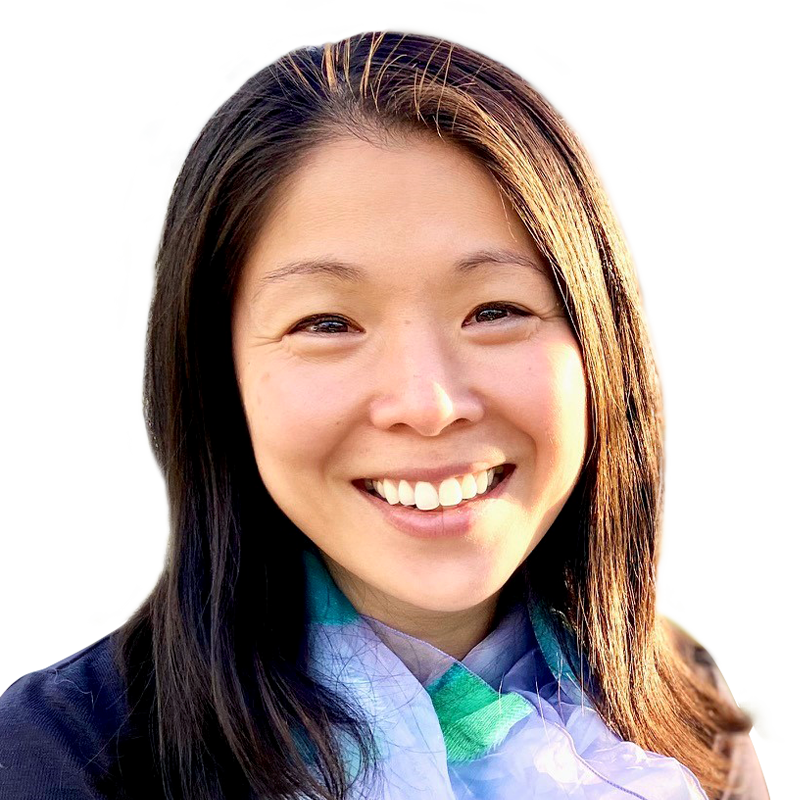
During a two-year stint as a humanitarian relief worker in rural Madagascar, Jean Su witnessed one of the country’s first major climate shocks. A powerful cyclone barreled onto the island nation at the height of the 2006 planting season, drowning thousands of acres of crop fields and causing cases of malaria to spike. Over the next seven months, six more cyclones came through, upending the lives of thousands of agrarian workers — and shifting Su’s career trajectory toward climate justice work.
She returned to the U.S., got a law degree, and eventually began “fighting the U.S. government” with campaigns to phase out fossil fuels. The climate impacts she’d witnessed in Madagascar “all boil back here,” Su told Grist. “The United States is exceptional, because it is the number one fossil fuel producer in the world.”
More than a decade later, Su is the energy director of the Climate Law Institute at the Center for Biological Diversity, a nonprofit that uses strategic litigation and grassroots activism to advance energy justice. During her time there, she has worked on a campaign to ban utility shutoffs in communities of color and has won an executive order to manufacture heat pumps for disenfranchised communities. More recently, her team has been urging FEMA to better prepare for the climate emergency, including legally petitioning the agency to recognize extreme heat and wildfire smoke as natural disasters.
But beyond the individual campaigns and lawsuits, Su said she is most proud of the work she and her team have done to shift the politics around energy justice on a global level. Those kinds of wins are “harder to see — but you saw them, for example, when the U.S. did not block and actually supported the fossil fuel phase-down language [at COP28],” she said. “That was actually big.”
Jennifer Wilcox
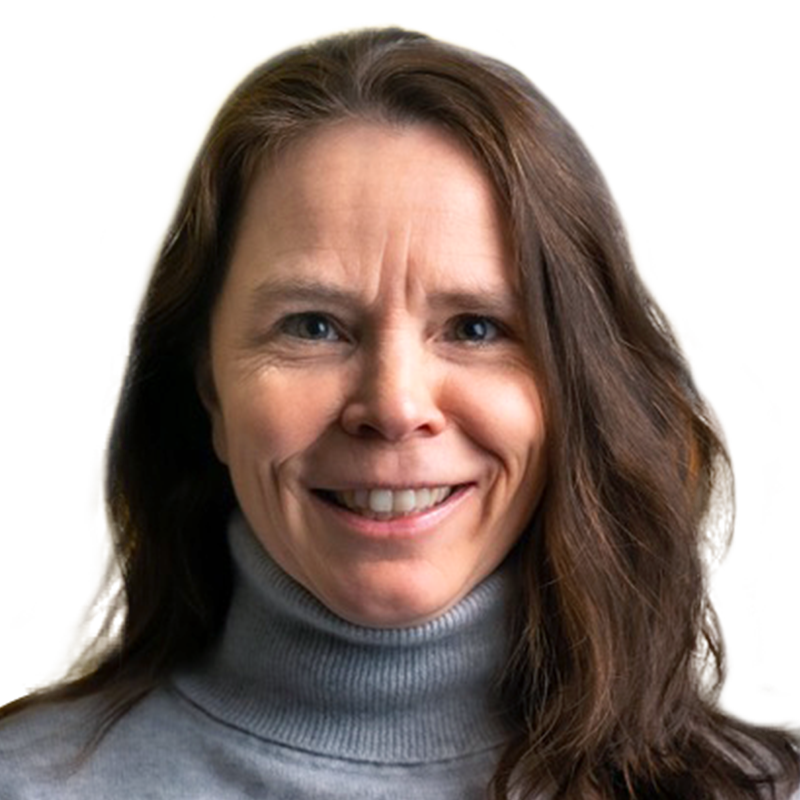
It’s cliché to say someone wrote the book on a subject — but in Jennifer Wilcox’s case, it’s true. In 2012, four years after she started teaching a course on carbon capture, she wrote the world’s first textbook on it. Carbon capture and storage, or CCS, has long been controversial, often seen as a distraction or a crutch for fossil fuel companies. But today, it is also widely understood that carbon capture is necessary to keep global temperature increase below 2 degrees Celsius. Wilcox is at the forefront of figuring out how that happens.
She spent the last 3.5 years at the Department of Energy, leading the Office of Fossil Energy and Carbon Management — previously just the Office of Fossil Energy. Before she arrived, it focused on studying the most efficient ways of producing and using coal, oil, and natural gas. Wilcox led a turnaround that saw the office shift to curbing the pollution those fuels generate. “It’s the most impactful work of my entire career,” she said. “Dollars [are] going out the door to spaces that we didn’t have dollars for before.”
Since her arrival, the DOE has invested well over $1 billion in carbon capture research and related programs. That money is not without its controversies — CCS technologies are still in early stages — but Wilcox sees the opportunity in funding technologies with potential for significant carbon reduction. She’s also directed funding to clean hydrogen and methane mitigation.
After the stint in government, Wilcox is back doing what she loves most: teaching. As a professor at the University of Pennsylvania, she’s developing new courses focusing on the barriers — financial, technical, or social — to deploying clean energy technology. “It’s another chapter that allows me to take everything I’ve learned and share it to the next set of people who might go and do what I just got to do,” she said.
Laurie Barr
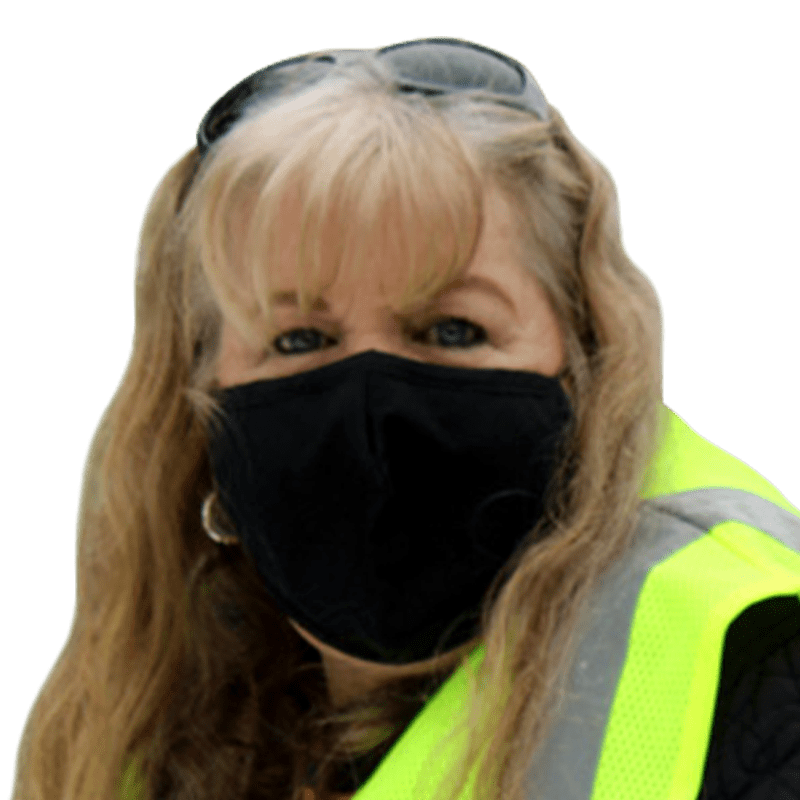
State officials have identified nearly 9,000 orphaned oil and gas wells in Pennsylvania. But some experts estimate that the true number is in the hundreds of thousands. Laurie Barr is on a mission to find every single one of them.
It’s no small task. Prospectors have been drilling in Pennsylvania since the late 1850s. When operators go under or otherwise abdicate their responsibility to plug and clean up well sites, the job falls to the state. Barr co-founded Save Our Streams in 2010 to try and help; her work became all the more urgent when methane from abandoned wells caused two homes in a nearby county to explode. She’s been devoted to finding abandoned wells ever since and has reported more than a thousand wells to the state environmental agency.
These wells are sometimes hidden deep in forests, on public roads, even under homes, slowly corroding and leaking methane, a potent greenhouse gas. Some unplugged wells are just holes in the ground, posing a safety issue for passersby. Barr has been using old aerial surveys to identify drilling sites from the 1930s and ’40s. Then she and a team of volunteers embark on “scavenger hunts” to find the wells and determine whether they’ve been properly plugged.
“What kept me going was knowing that people needed to know about these and didn’t,” Barr said. “I needed to raise awareness and promote plugging.”
She’s now training the next generation of well hunters, with plans to extend the effort into nearby states. “I’m 64 years old now, and I know that one day I’m not going to be able to do this,” she says. “That’s why I switched gears and started focusing a lot of my efforts on training younger people.”
Andrew Butts
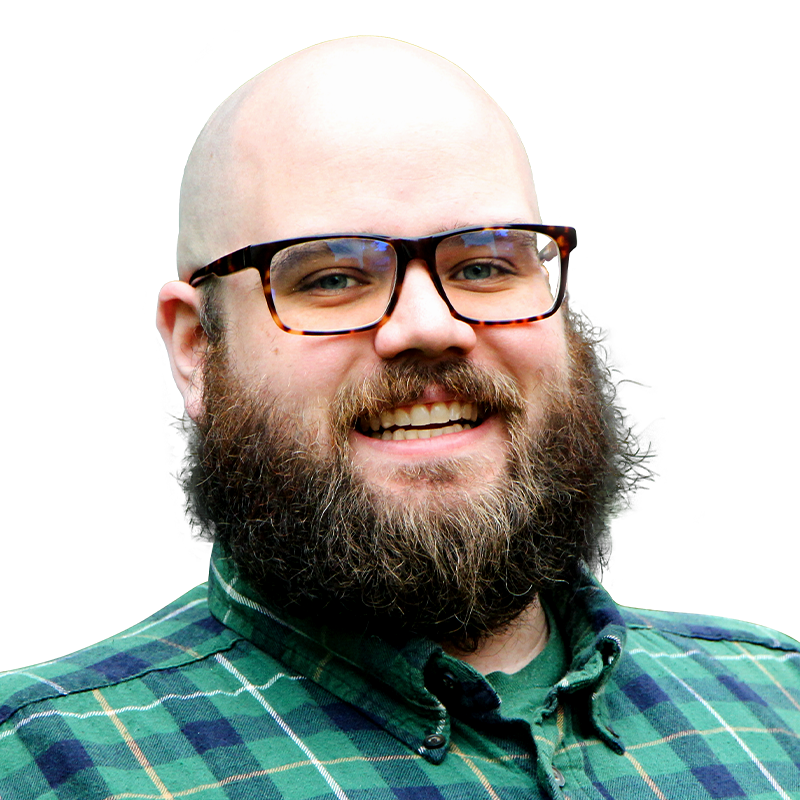
Andrew Butts grew up in Pleasant Prairie, Wisconsin, downwind from the largest coal plant in the state at the time. When asthma attacks would wake him in the middle of the night, his parents sat him in the bathroom with the shower on full blast. He carried those memories into adulthood.
In graduate school at the University of Minnesota, Butts was introduced to the idea of green energy pricing. Right after that class, in the hallway, he signed up to receive wind energy from his power provider, for a small increase on his monthly bill. When he posted about it on Facebook, he found that friends all over the U.S. wanted to opt into green energy, too, but were encountering confusing information. “I started helping them research their programs and I realized, ‘Oh, these utilities are making these programs very hard to understand,” he said.
It gave him an idea. “Can we build a national database of green pricing programs to help anyone find and sign up for green energy?” he wondered.
In 2022, he went public with Green Neighbor Challenge, a website that walks people through the process with location-specific resources, from finding your municipal or state clean power program, to figuring out the cost of switching energy sources, to calling your power company and signing up. Recently, the site has also expanded to include information about energy efficiency and electrification incentives.
Some 15,000 people have visited Green Neighbor Challenge since its inception, and Butts hopes to work with community organizations to continue getting the tool into the hands of people who want and need it most, including renters. The platform is a centralized form of what he started doing for his friends back when he discovered green energy pricing — helping a neighbor figure something out.
Lauren Flanagan
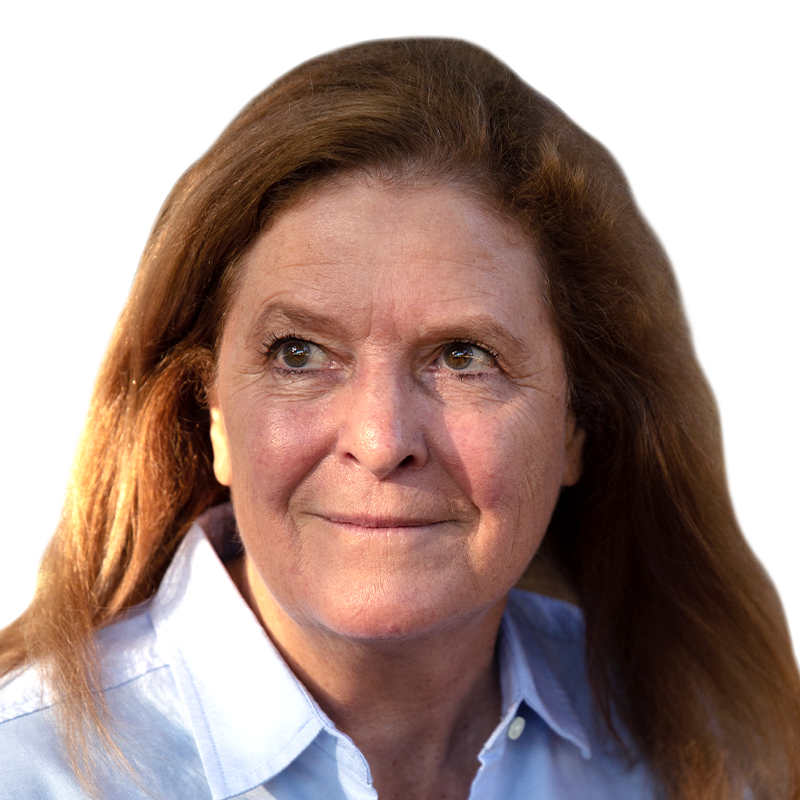
Lauren Flanagan calls herself a lifelong entrepreneur. Hailing from the California Bay Area, she started a number of software companies in the early days of the tech boom. But watching as the impacts of climate change — in particular, extreme weather disasters — grew worse and worse, she came to a realization: “We’re sending fossil fuel generators for mobile power after these terrible events, which already have catastrophic environmental damage,” she remembers thinking. “We needed to break that dirty cycle.”
In 2017, she co-founded Sesame Solar, joining forces with an engineer who helped develop the company’s signature mobile nanogrids. The trailers resemble food trucks with solar roofs, but the inside can be configured for any number of uses — like Lego sets, Flanagan said. One could be a kitchen, another a mobile office. The company sent its first prototype to Dominica in the aftermath of Hurricane Maria, where it helped power a medical clinic, outfitted with Wi-Fi communications, a rainwater filtration system, and refrigeration for medicines.
Since then, Sesame Solar has added a new innovation: green hydrogen. When the unit isn’t busy, its solar power can be used to drive electrolysis — splitting water into hydrogen and oxygen. The hydrogen is then stored in a fuel cell. “You’ve got backup power and you don’t need a supply chain,” Flanagan said. “You can just have sunshine and water and run indefinitely.”
The company’s customers include state and local governments, humanitarian organizations, and telecommunications companies. While Flanagan’s focus is on emergency relief, the units can be used for all manner of other remote power needs when there’s no disaster to respond to.
“There’s nobody really doing what we’re doing,” Flanagan said. “Our biggest competition is the status quo.”
Elizabeth Hansen
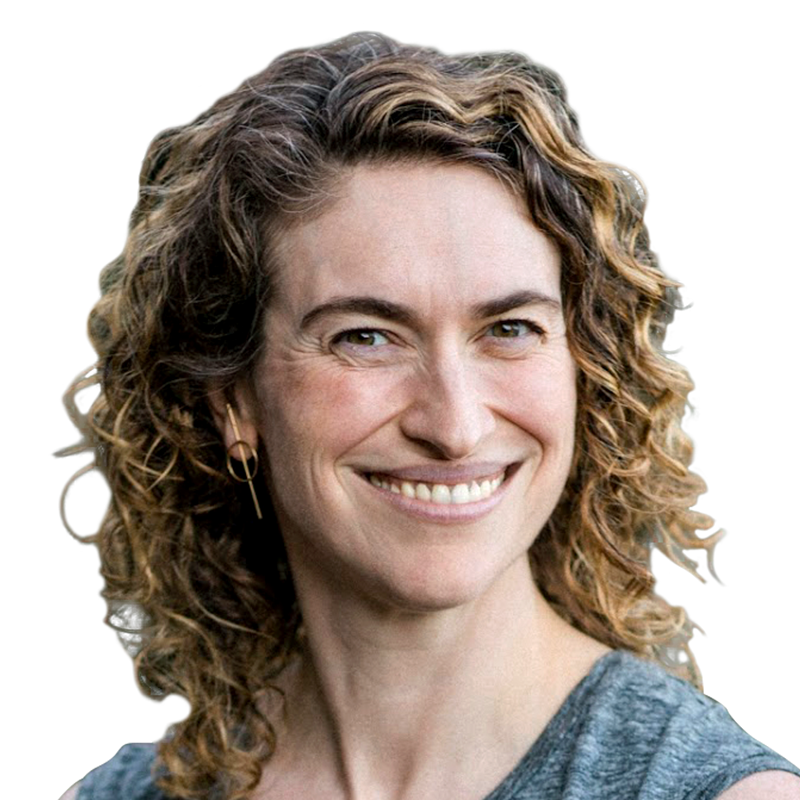
Seven years ago, Seattle Children’s Hospital was doing an inventory of its carbon footprint. Elizabeth Hansen, an anesthesiologist there, was alarmed to learn that the gases she used daily accounted for 7 percent of the facility’s total greenhouse gas emissions. Some, like nitrous oxide, have almost 300 times the warming potential of carbon dioxide. Others, like desflurane, are over 2,000 times worse for the planet over a 100-year period.
Working with her colleagues, Hansen devised a way to measure and track their emissions, found alternatives that allowed them to phase out the most harmful gases, and developed techniques to administer medication more efficiently. “I think that that’s all of our responsibility, to leave things better than we found them and try not to make things worse for the next generation. It’s on all of us,” she said.
But it wasn’t just a matter of reshaping their practice. Over the last several years, Hansen sleuthed through purchasing and operation room records and discovered that more than 90 percent of the nitrous oxide that the hospital purchased was wasted before it was used, partly because it was stored in containers designed to leak to avoid pressure buildup. A year ago, her department got approval to cap off these old tanks and use smaller, leak-free ones instead.
Since then, Hansen said her hospital’s anesthesiologists have seen a tenfold reduction in their emissions. She’s also developed a consortium, Project Spruce, and rallied 18 children’s hospitals to join her sustainability effort. This summer, all active members have reduced their anesthesiology emissions by 50 percent or more.
“It’s really moving to see how this is affecting people and how they feel empowered to change their practice,” she said.
Asegun Henry
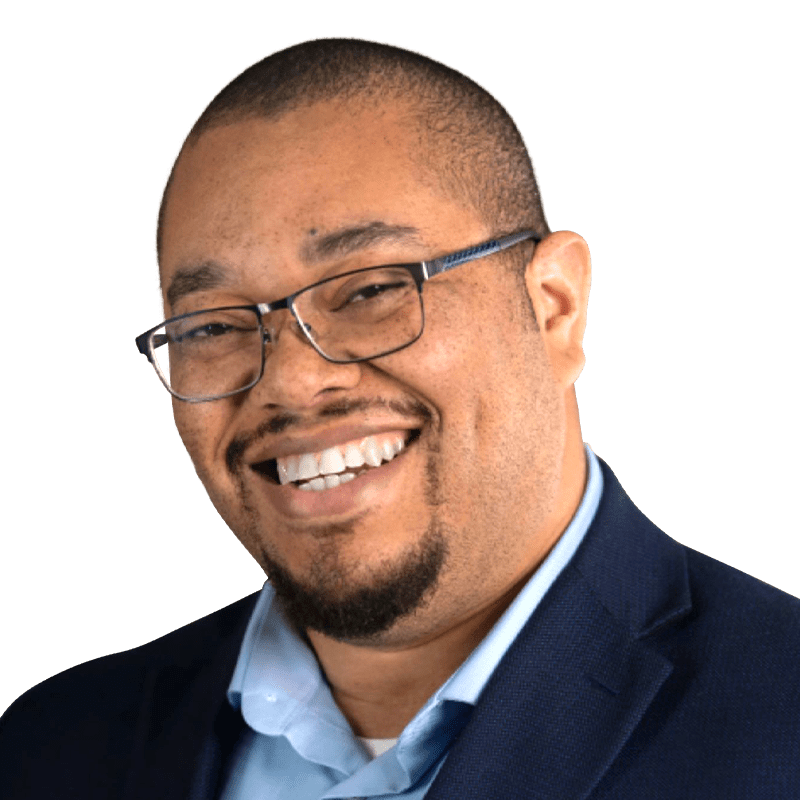
When Asegun Henry was in high school, he tried to invent a car that ran on water instead of gas. The idea never made it off the page. But Henry, encouraged by his teachers, never stopped thinking about climate challenges. “I think I even understood at that age that this was a problem that was sufficiently big that it would likely take my entire life to make a contribution to it,” he said.
In 2018, Henry — then an associate professor in mechanical engineering at MIT — helped invent the “sun in a box,” a new system for storing renewable energy. The giant battery works in steps: First, it converts concentrated solar energy into heat. Then, liquid metal carries that heat to giant blocks made out of carbon. The blocks grow extremely hot (half the temperature of the sun — which earned Henry and his team a Guinness World Record) and the heat can be stored there for weeks. As the blocks cool, the battery converts the heat back into electricity and sends it into the grid, completing the cycle.
The system, which can store a tremendous amount of power and release it slowly, is cheaper than the dominant storage technology du jour: lithium-ion batteries. In addition, Henry’s tech doesn’t rely on rare minerals and metals, it’s immensely durable, and it can’t explode. The batteries will be the size of football fields. They’ll power cities, not cell phones.
Henry and the rest of his team at Fourth Power are currently building a prototype at MIT. It’s roughly the size of a house and is expected to be capable of powering 100 homes for 10 hours. If Fourth Power can prove that the battery is scalable, the next installation will be orders of magnitude larger. And if that goes well, Henry hopes the future will involve transforming the grid as we know it. “It will allow us to decarbonize electricity,” Henry said. “This will be what turns the tide.”
Benjamin Huynh
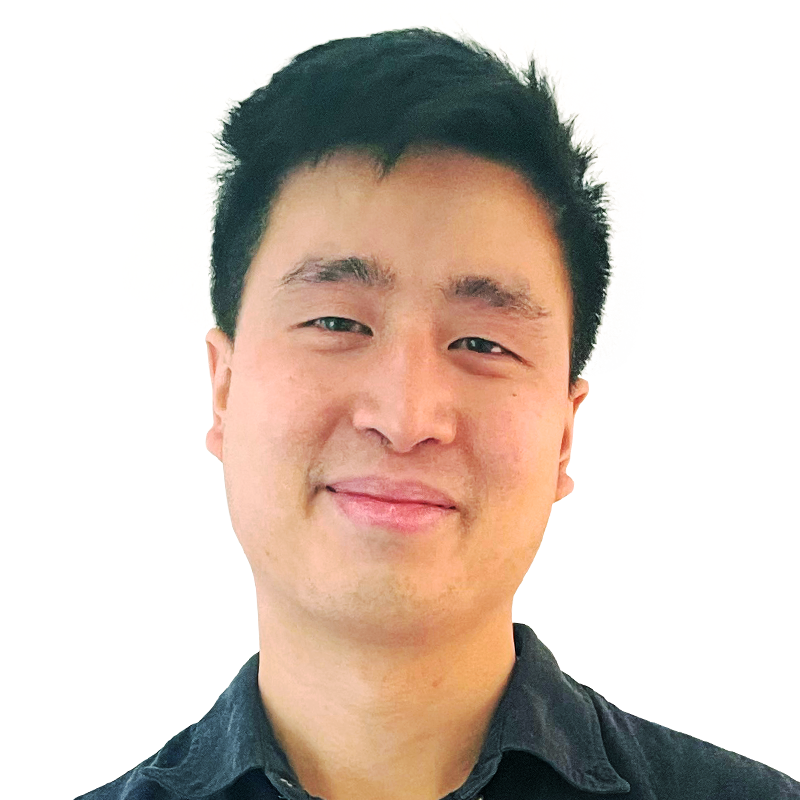
In 2021, an abandoned and decaying Yemeni oil tanker was at risk of spilling 1.1 million gallons of crude oil into the Red Sea. With a civil war raging, there was little optimism that the warring parties would come to the table and devise a safe solution — until Benjamin Huynh, then a PhD candidate at Stanford, led a study using a computer simulation to show that a spill’s effects would devastate not only Yemen but the coastlines of Saudi Arabia and Eritrea, and disrupt the food supply for up to 8 million people. The study’s publication led to activist efforts, and ultimately U.N.-mediated negotiations that resulted in a successful multimillion-dollar effort to transfer all the oil off the ship.
Huynh, an assistant professor of environmental health and engineering at Johns Hopkins, has made a career out of AI and data science that leads to real-world impacts, primarily as a tool to address environmental injustices. This year, he modeled the prevalence of childhood lead exposure in Chicago, his hometown.
Huynh’s family is originally from Vietnam, and people in his community were affected by exposure to Agent Orange. That knowledge instilled an awareness of the intertwined effects of environmental harm and militarism from an early age, he said.
While it relies on AI, Huynh’s work also reckons with the deficiencies of machine learning as a policy tool. Another of his studies found glaring blindspots in an algorithm used by the California EPA to allocate billions of dollars in climate finance to disadvantaged neighborhoods, resulting in some communities getting left out. His vision for the future involves democratizing control over the tools he uses. “How do we make sure that the communities most affected by environmental injustices are actually involved in allocating these resources?” he said.
Zeyneb Magavi

Growing up in a multicultural family, earning a degree in the male-dominated field of physics, and coordinating global health research across five countries has taught Zeyneb Magavi a lot about building bridges. That skill has proven invaluable in her climate work.
Her climate chapter started with the birth of her children, and her desire to create a safe environment for her family. Magavi wanted to install geothermal heating in her Cambridge home — a carbon-free method that uses heat from the Earth as an energy source. But the infrastructure was outside her budget. That compounded a growing feeling that any individual actions she could take wouldn’t match the scale of the climate crisis.
She began working with local organizations to help address carbon emissions at the community level and became one of the leaders of a project focused on finding and fixing large methane leaks in the Boston area. “I’d spent a summer with the gas workers measuring leaks, and had begun to understand what the gas system was and how the utility infrastructure works,” she said. There, she saw an opportunity: Could the utility manage a network of pipes that would deliver clean geothermal energy, instead of polluting gas?
In 2017, Magavi officially joined the Home Energy Efficiency Team, or HEET, the organization that coordinated the project. After co-leading the team for several years, she became its sole executive director earlier this year, focusing its mission on the thermal energy transition. Thanks to her efforts, the energy company Eversource broke ground this summer on the country’s first utility-run geothermal network.
The biggest success, Magavi says, was the bridge-building HEET facilitated among climate advocates, gas utilities, policymakers, and others. “You are rarely in a room with all of those entities where not only is there celebration, but comradery and trust,” Magavi said. “We did this together.”
Mike McCarthy

The Inland Empire in Southern California has nearly 1.5 billion square feet of warehouse space. That staggering figure likely wouldn’t be known if it weren’t for Mike McCarthy. A resident of Riverside, McCarthy watched as the logistics industry boomed in his backyard, bringing increased truck traffic. The region already had some of the worst air quality in the country. But city and county planners were doing little to understand the overall impact of the new warehouses. Instead, they were approving projects piecemeal.
In 2022, McCarthy, an air quality data scientist, decided to put his skills to use. Pulling from county assessors’ websites, a state environmental planning dataset, and the work of researchers at the Robert Redford Conservancy for Southern California Sustainability, he created a map of every warehouse in LA and its surrounding counties. Today, the database also includes projects approved and pending review. And unlike some similar database projects, his isn’t behind a paywall.
Residents fighting warehouses can now easily point to existing and planned projects in their neighborhoods when making the case that additional buildout will increase the cumulative burden on communities. Politicians and local planning agencies can see the scale of buildout in their districts, too.
“Having an independent source of numbers to check is helpful for individuals and other communities fighting this,” he said.
McCarthy, who has spent more than 1,000 hours developing and refining the tool over the last two years, is now working to expand it to the Central Valley. He hopes one day to collaborate on a nationwide open-source warehouse database. “That would be the grand goal,” he said. “I would love to do it if I had the time and money.”
Suzanne Singer
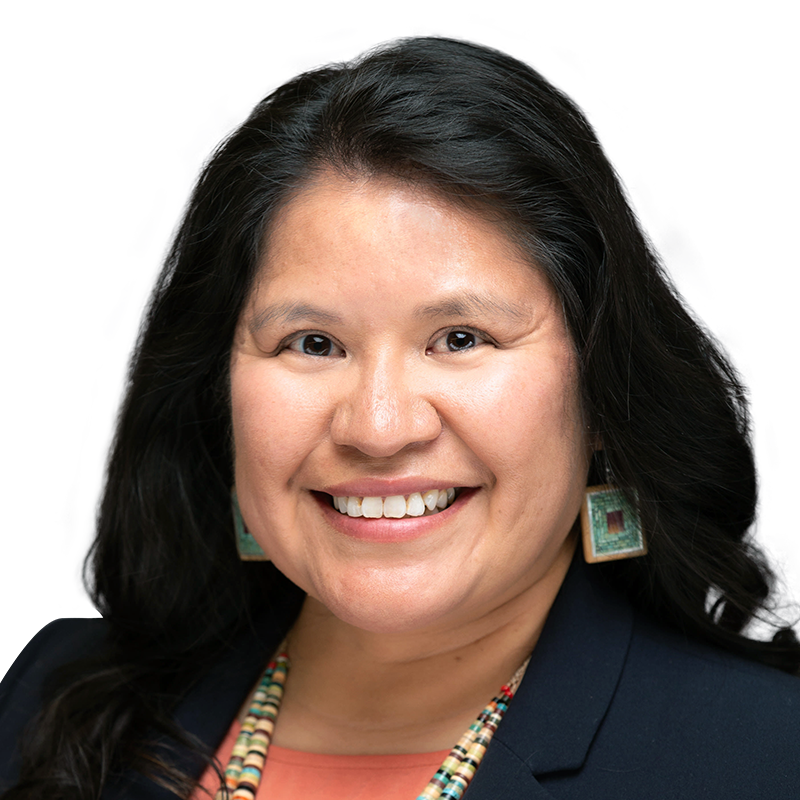
On the Navajo Nation, almost 15,000 homes do not have electricity. That means no internet access, no lights after dark, no refrigeration. Many drive daily to local stores to get ice. Part of the problem stems from how far away these homes are from the electric grid.
Suzanne Singer, a Diné woman with a PhD in mechanical engineering, was doing solar energy research at a national laboratory, getting a firsthand look at projects focused on sustainability and energy independence, when she realized she could use her skills to help her tribe address energy challenges.
In 2015, Singer co-founded Native Renewables, a nonprofit that installs off-grid solar power and battery storage in homes on the Navajo and Hopi reservations. The organization aims to not only advance the clean energy revolution, but to improve the quality of life for rural Indigenous communities.
“Our mission is to grow Indigenous-led solar power, knowledge, and solutions with Hopi and Navajo families in our communities. What that means is we wanted to grow a team of installers locally based and Indigenous,” Singer said.
These local installers also speak Diné, which comes in handy as they work in the homes of elders. “It’s important for us to have staff that can communicate and speak the language, can communicate with those families and help them understand,” Singer said.
The Navajo Nation has seen energy industries like coal and uranium extract resources from its land. Singer wants Native Renewables to learn from that history and offer a different path, investing in local energy resources that will actually benefit the community and provide quality jobs to boot. The team has brought solar to around 90 homes since the organization’s founding, and more than 20 this year alone. With the help of new funding and partnerships, Singer hopes to eventually get to 100 homes a year.
Jonathan Wilker
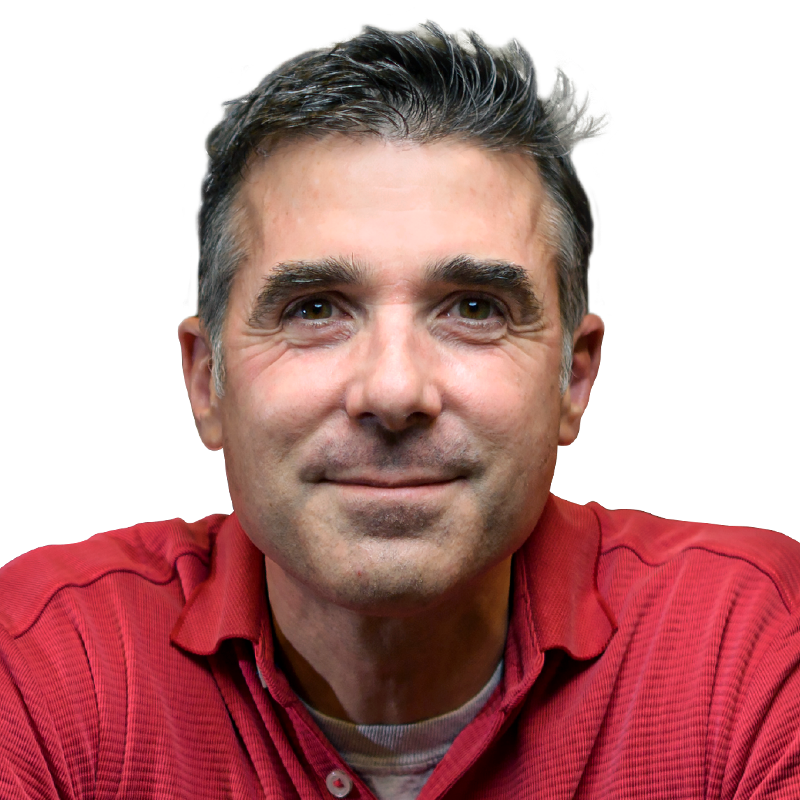
When Jonathan Wilker was getting his PhD in chemistry, he took up scuba diving in his spare time. On dives, he marveled at the starfish and oysters he saw sticking to the undersides of caverns.
“A wave might come and you get knocked around, you can’t stay in one place,” he said, “but these creatures are all locked in.” Wilker assumed they were suctioned to rocks, but soon realized they were actually fastened by a natural, waterproof adhesive.
That realization changed the course of his career. He started inventing glues and other adhesive materials out of similar chemical bonds to the ones used by mussels and oysters. The glues have biomedical applications — he and his team are currently using them in the lab to fuse together broken skin and organs. But Wilker thinks they can serve a more general purpose, as a green substitute for the millions of tons of petroleum-based tapes and industrial chemical-based glues that stick our world together.
Almost every modern amenity relies on glues to function: iPhones, shoes, window panes, furniture, books, flooring, and more. Wilker, who now teaches chemistry at Purdue University, knows his adhesives could theoretically replace most of those currently on the market, but competing with existing products that are cheap and plentiful is an uphill battle.
As more companies embrace sustainability, however, Wilker thinks demand for green adhesives will grow. Plans are afoot to launch a new startup — or possibly more than one — using Wilker’s invention, with the goal of making affordable glues and tapes formulated from compounds used in nature. Although it’s a distant horizon, Wilker’s ultimate vision is to “take all of the adhesives in the world and make them sustainability-sourced, carbon-negative, degradable in the landfills, but not compromise on performance,” he said. “That’s what we’re trying to do.”

Know someone who
should be featured here?
Nominate them for next year’s Grist 50 list.
Credits
- PROJECT DIRECTOR
- Jess Stahl
- PROJECT EDITOR
- Claire Elise Thompson
- REPORTERS
- Jake Bittle, Anita Hofschneider, Gautama Mehta, Sachi Kitajima Mulkey, Naveena Sadasivam, Taylar Dawn Stagner, Zoya Teirstein, Claire Elise Thompson, Syris Valentine, Joseph Winters, Kate Yoder, Lylla Younes
- ADDITIONAL EDITING
- Chuck Squatriglia
- FACT CHECKER
- Angely Mercado
- RESEARCHER
- Sophie Hurwitz
- COPY EDITORS
- Jaime Buerger, Joseph Winters, Kate Yoder
- ADDITIONAL CONTRIBUTIONS
- Clayton Aldern, L.V. Anderson, Jaime Buerger, Matt Craft, John Thomason
- ART DIRECTORS
- Mia Torres, Teresa Chin
- ILLUSTRATOR
- Cristina Spanò
- SITE DEVELOPMENT
- Michael Weslander
- BUSINESS DEVELOPMENT
- Brian Troyer
- AUDIENCE, MEMBERSHIP, AND DISTRIBUTION
- Jess Alvarado-Lepine, Jeff Giza-Martin, Rachel Glickhouse, Mignon Khargie, Megan Merrigan, Justin Ray, Tory Stephens
- EVENTS
- Lisa Jurras-Buchanan, Rachel Bouton
Published Sept 5, 2024
